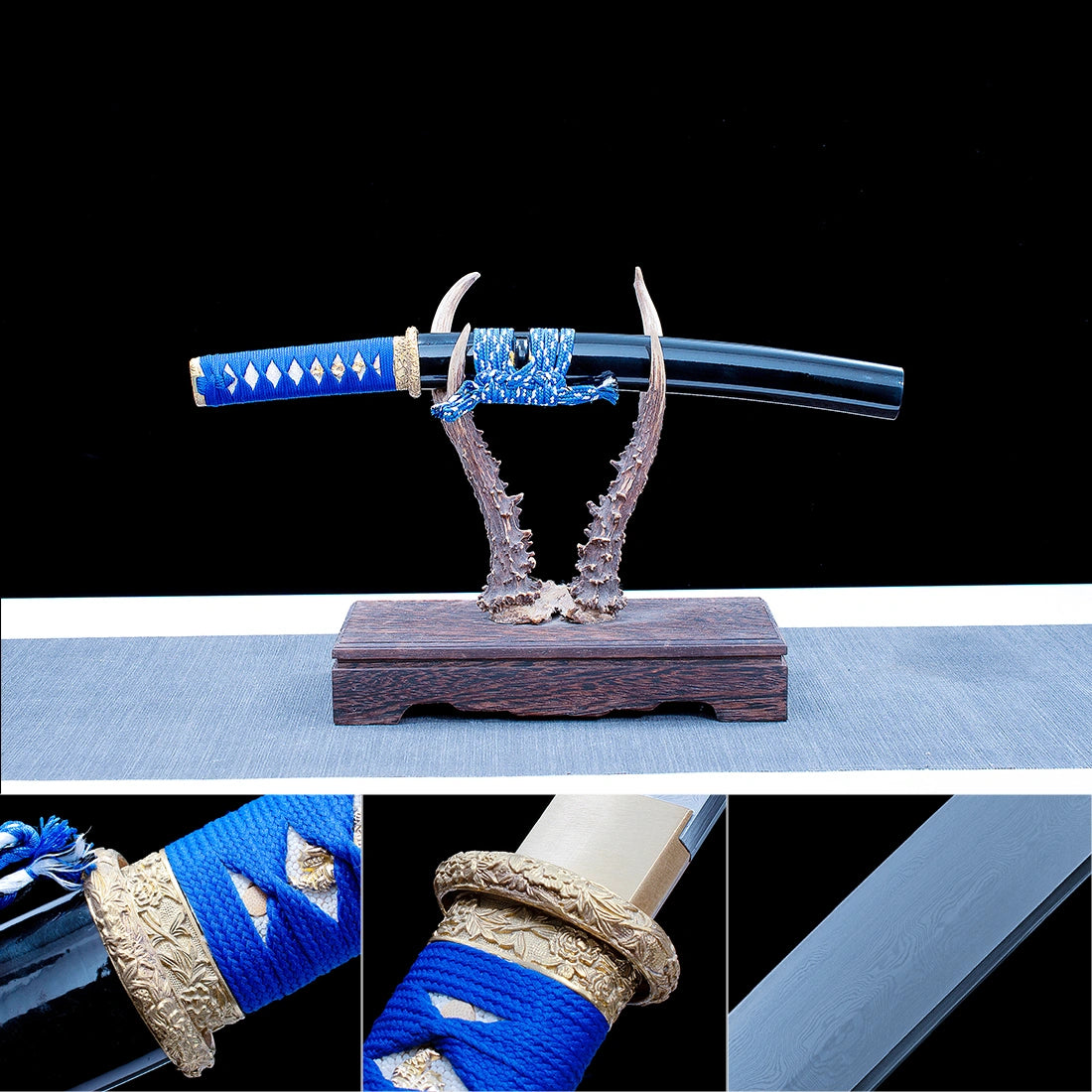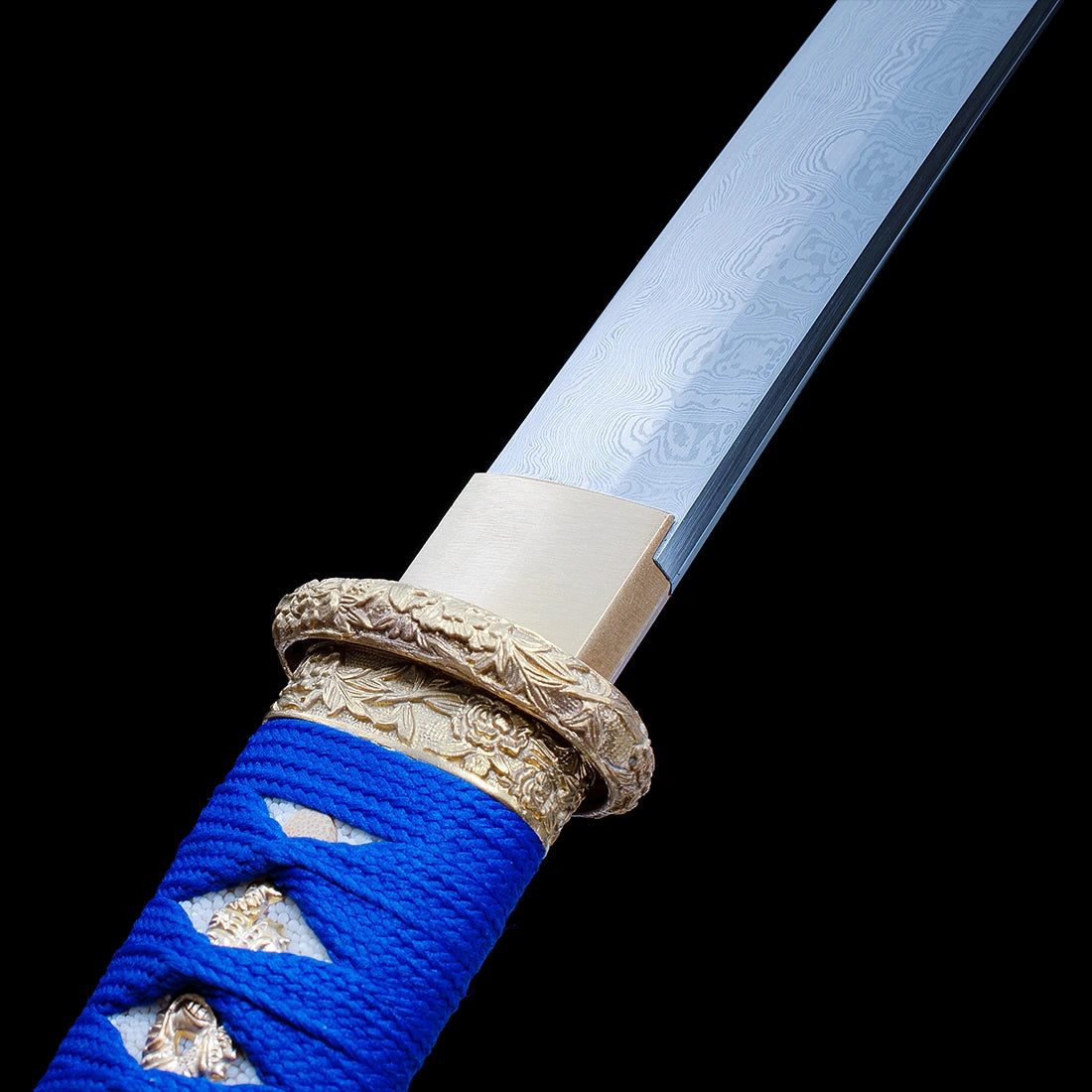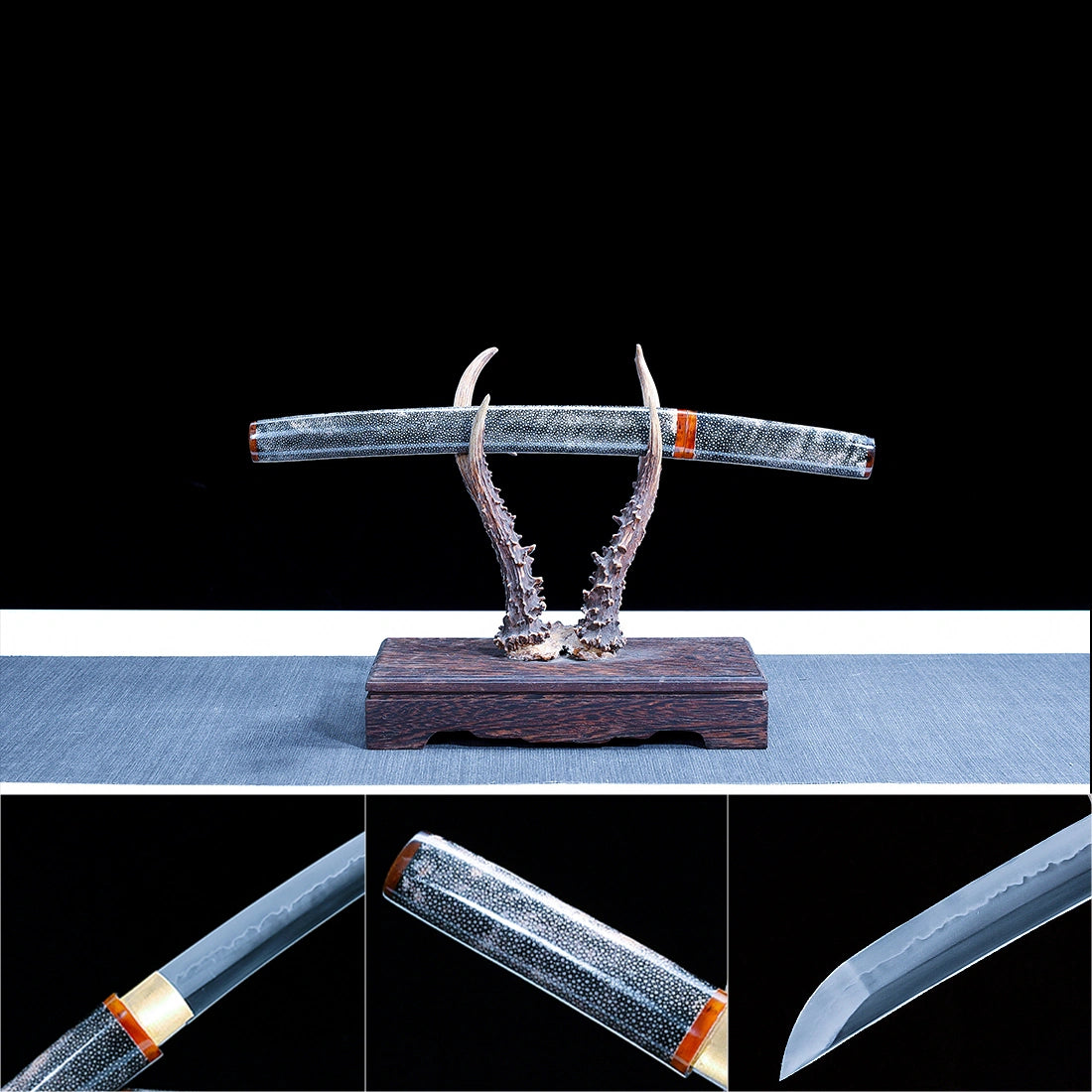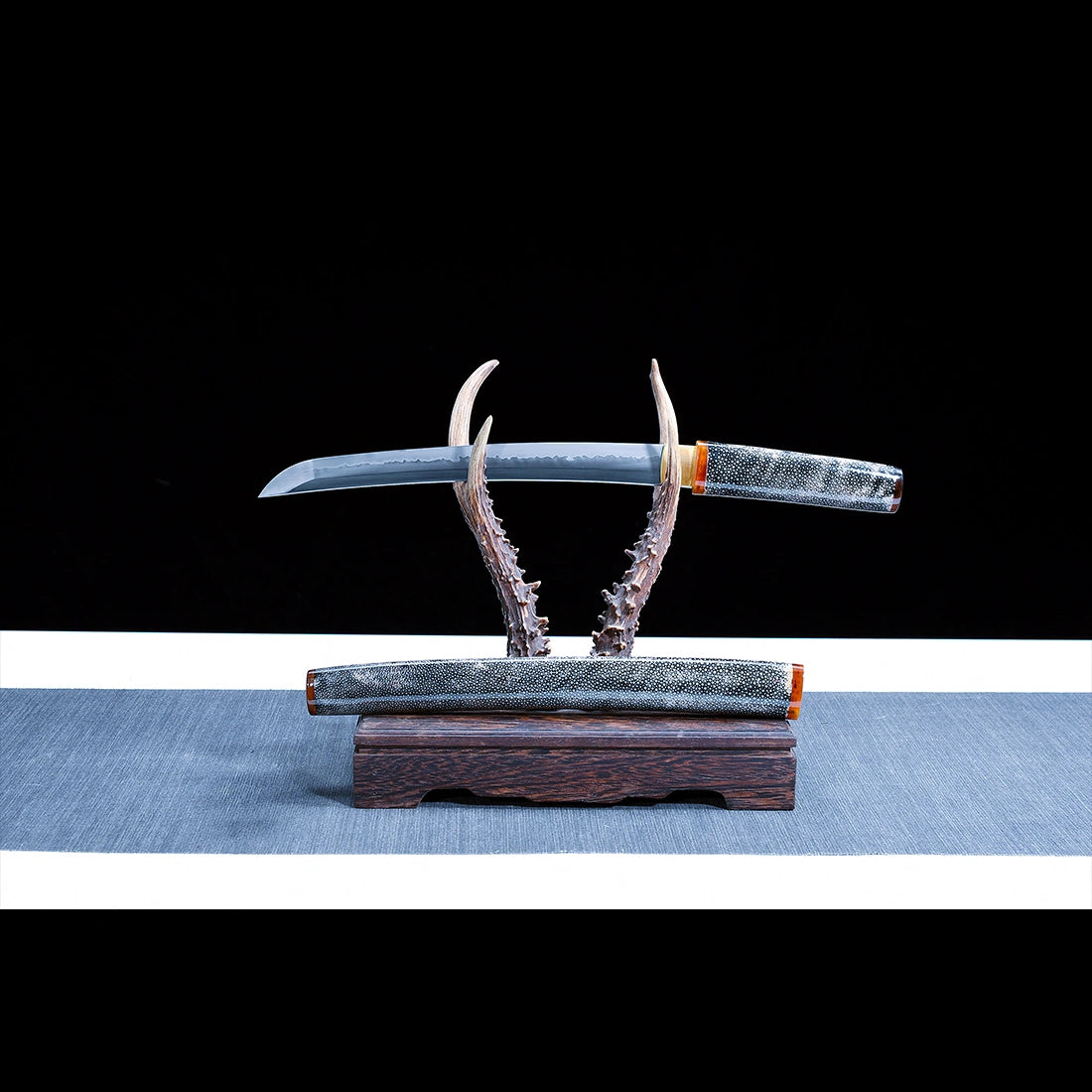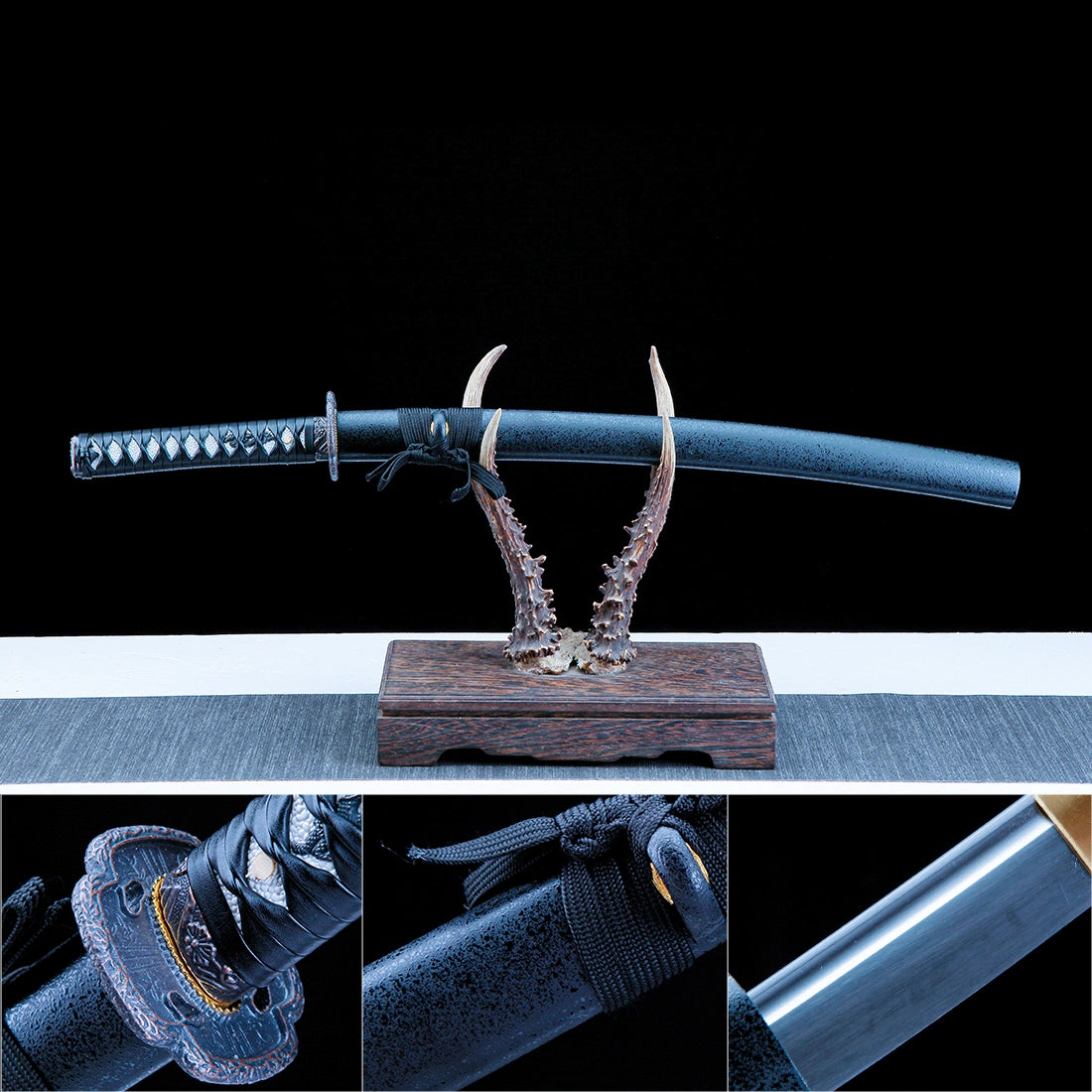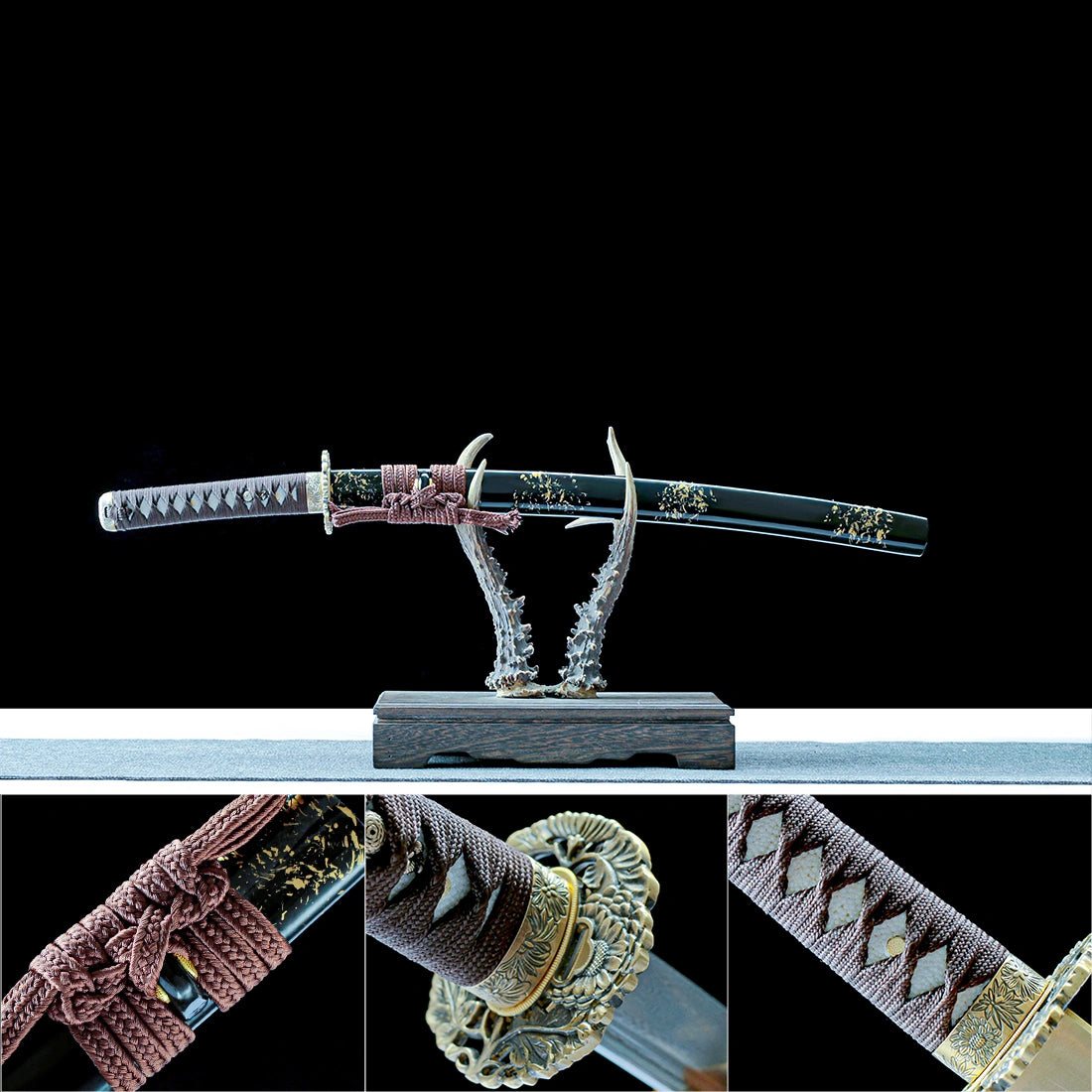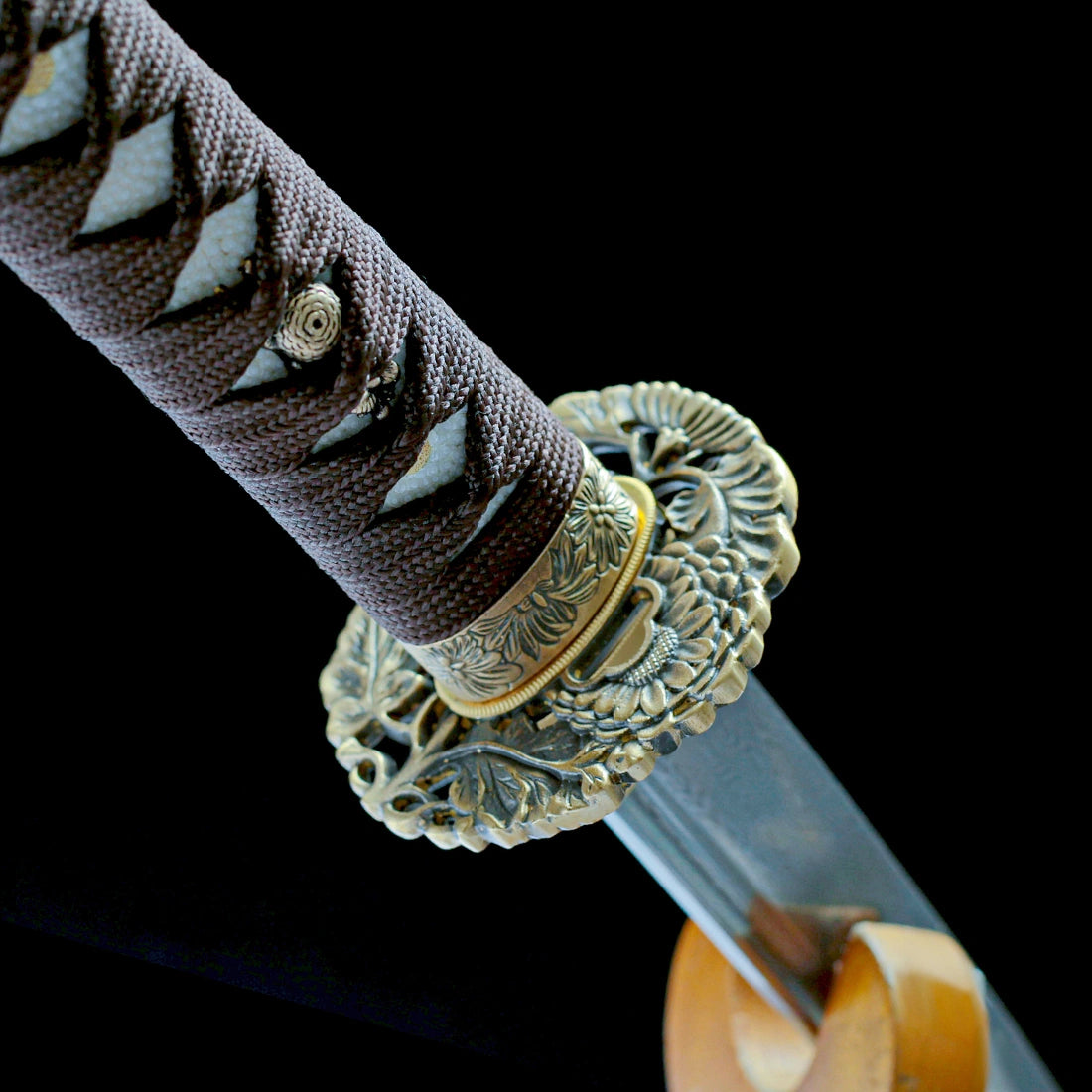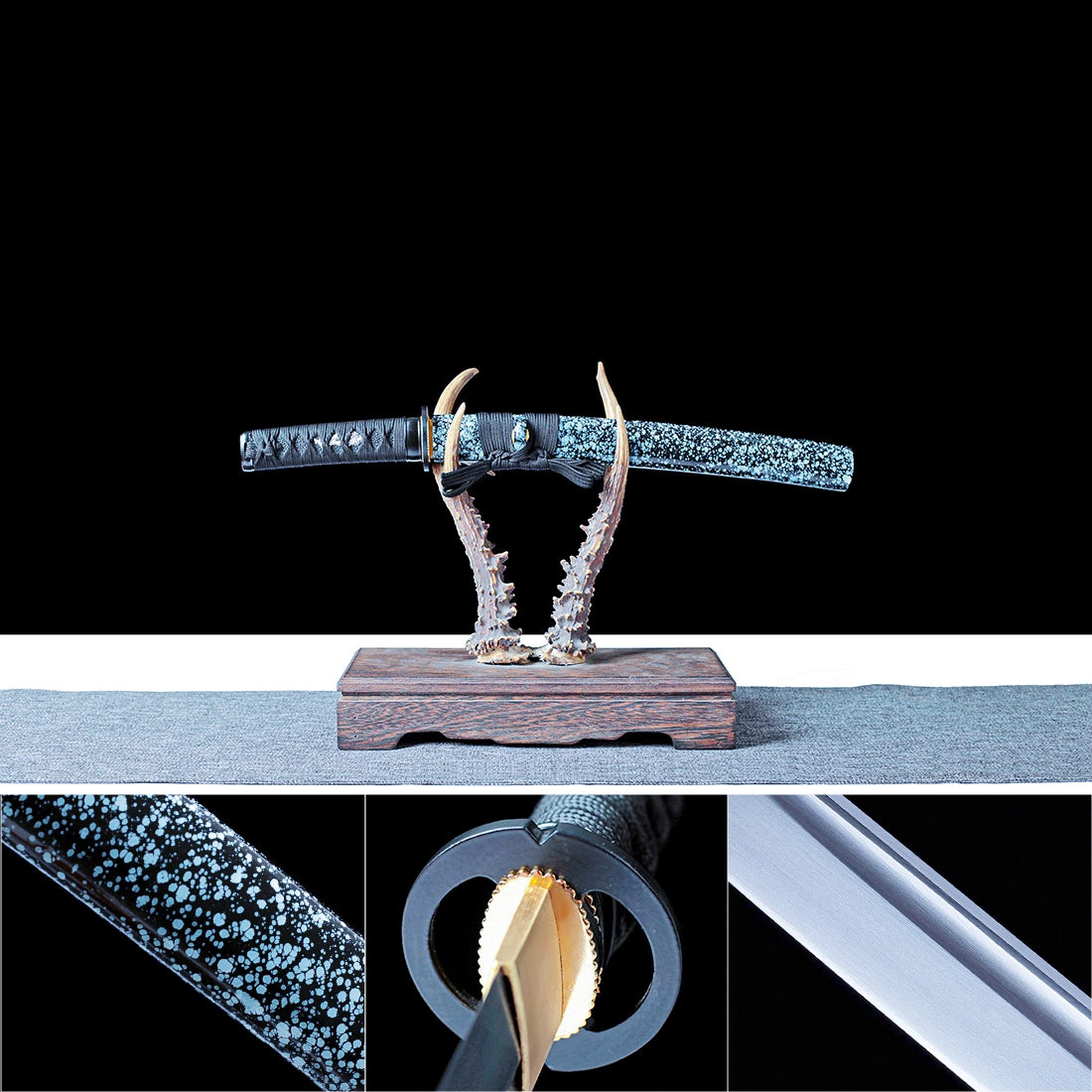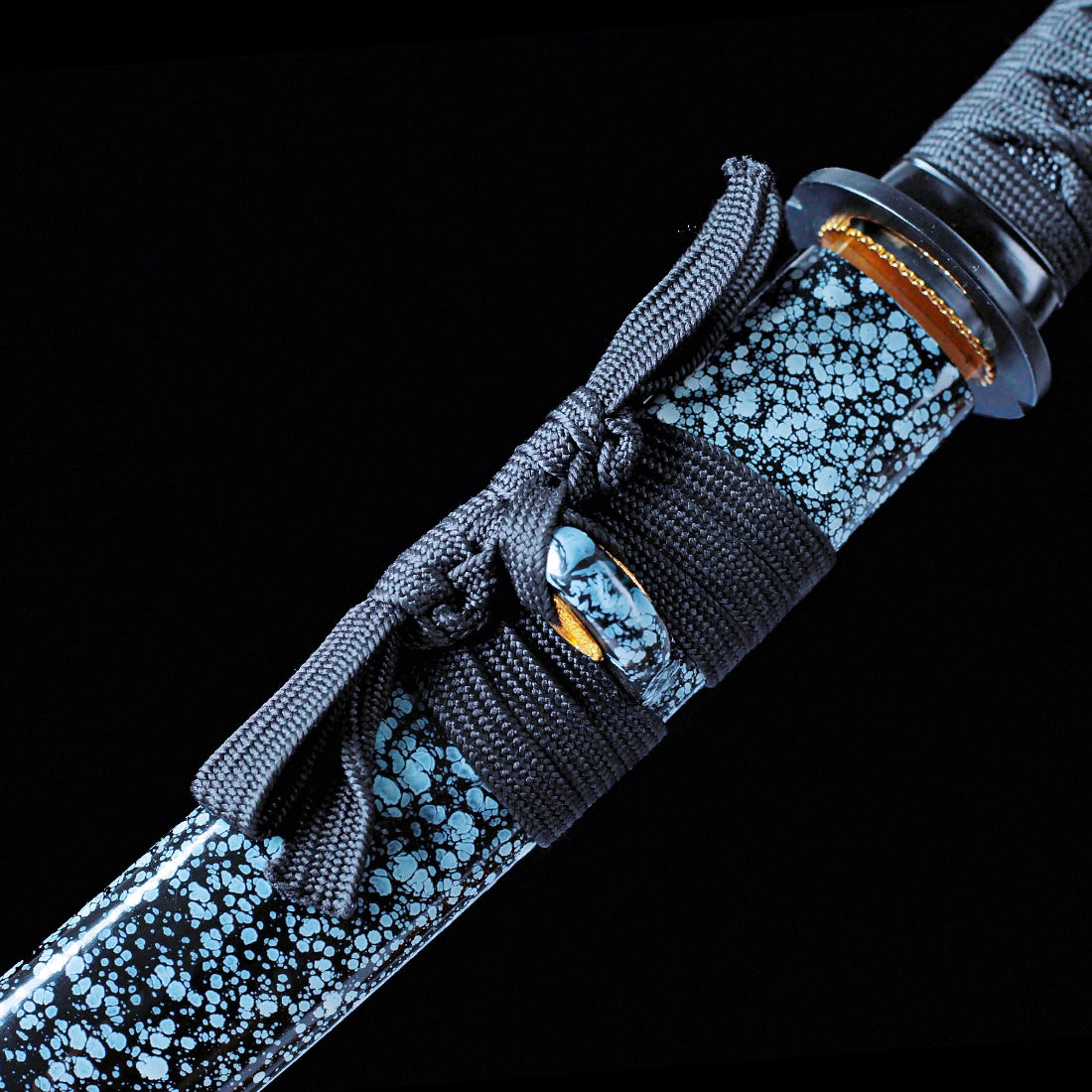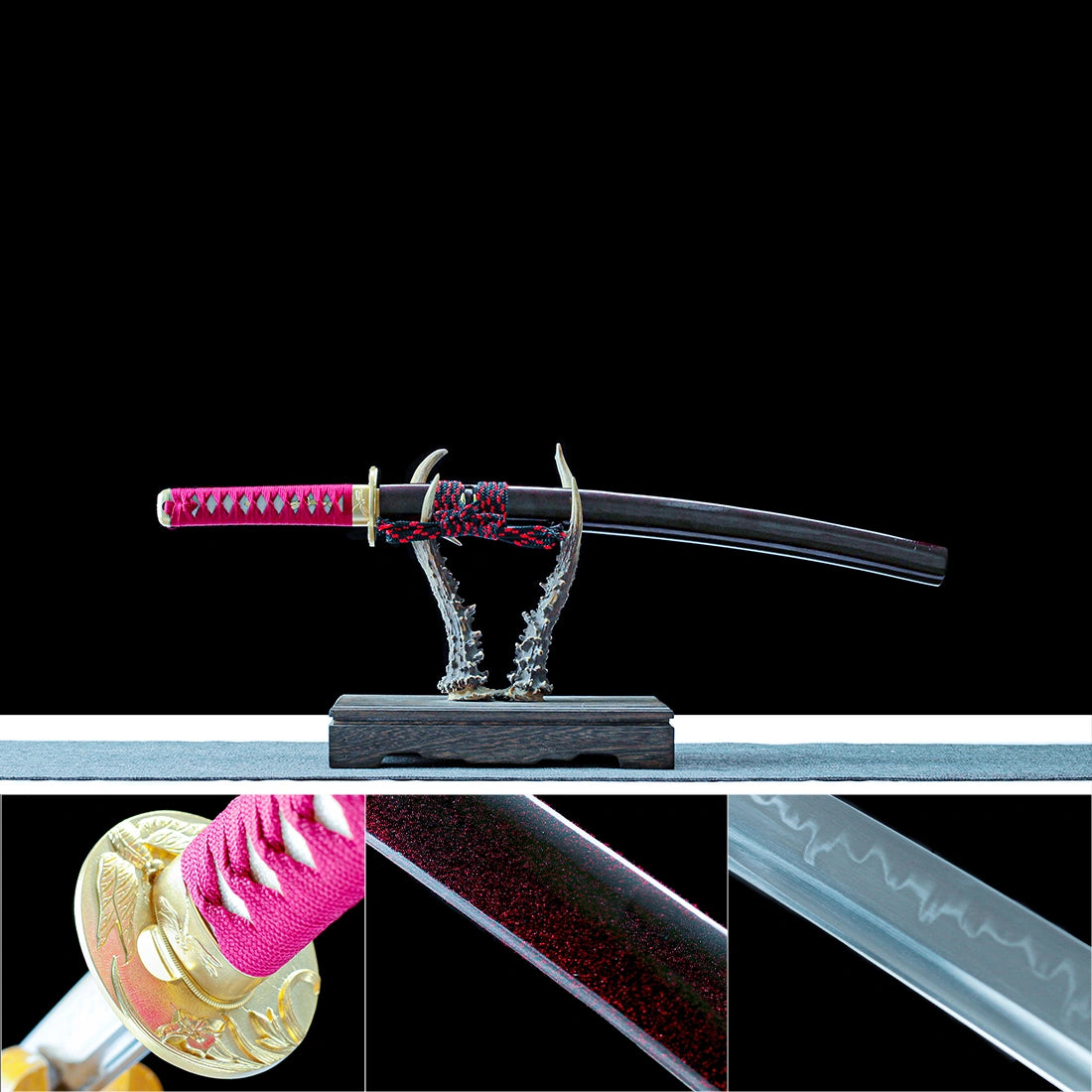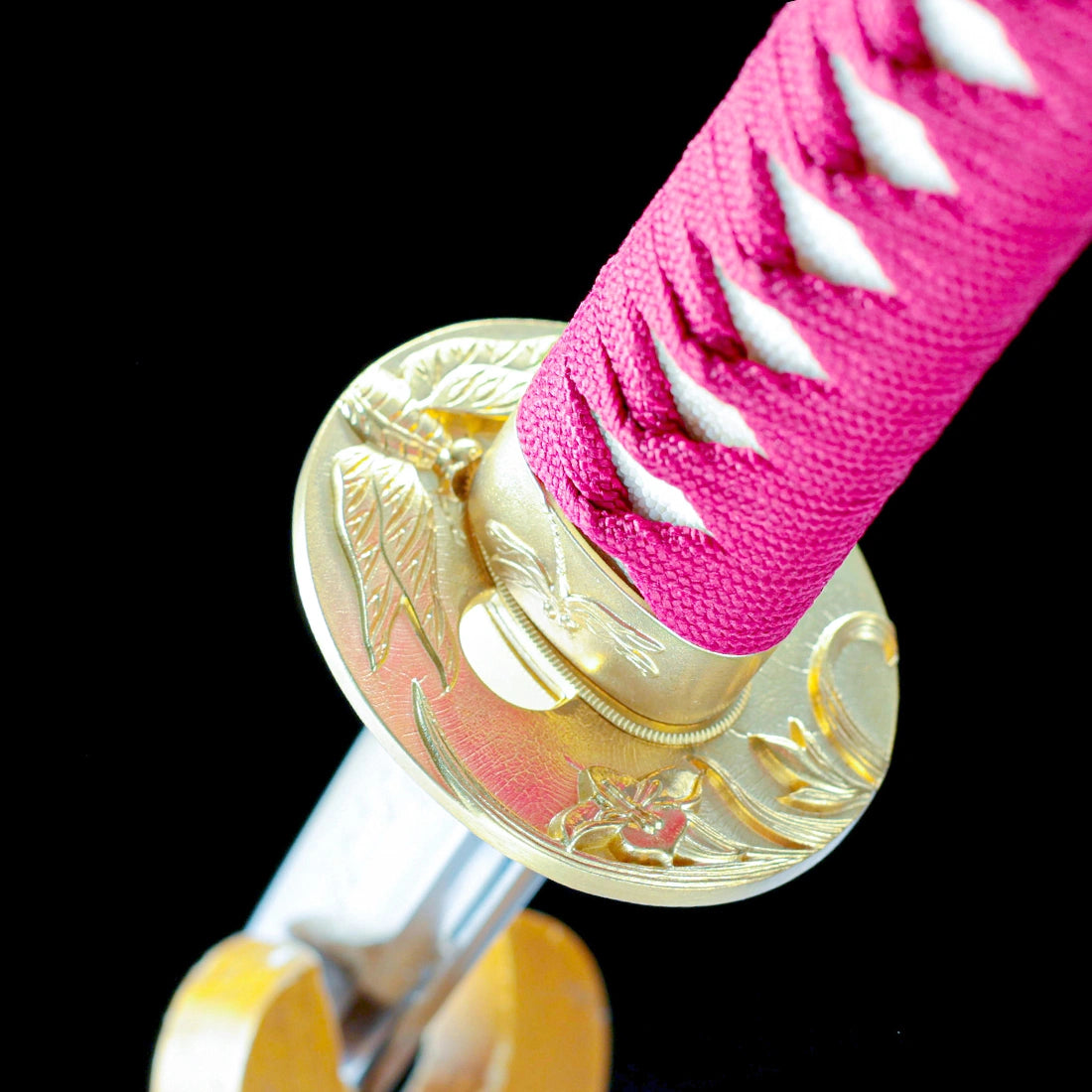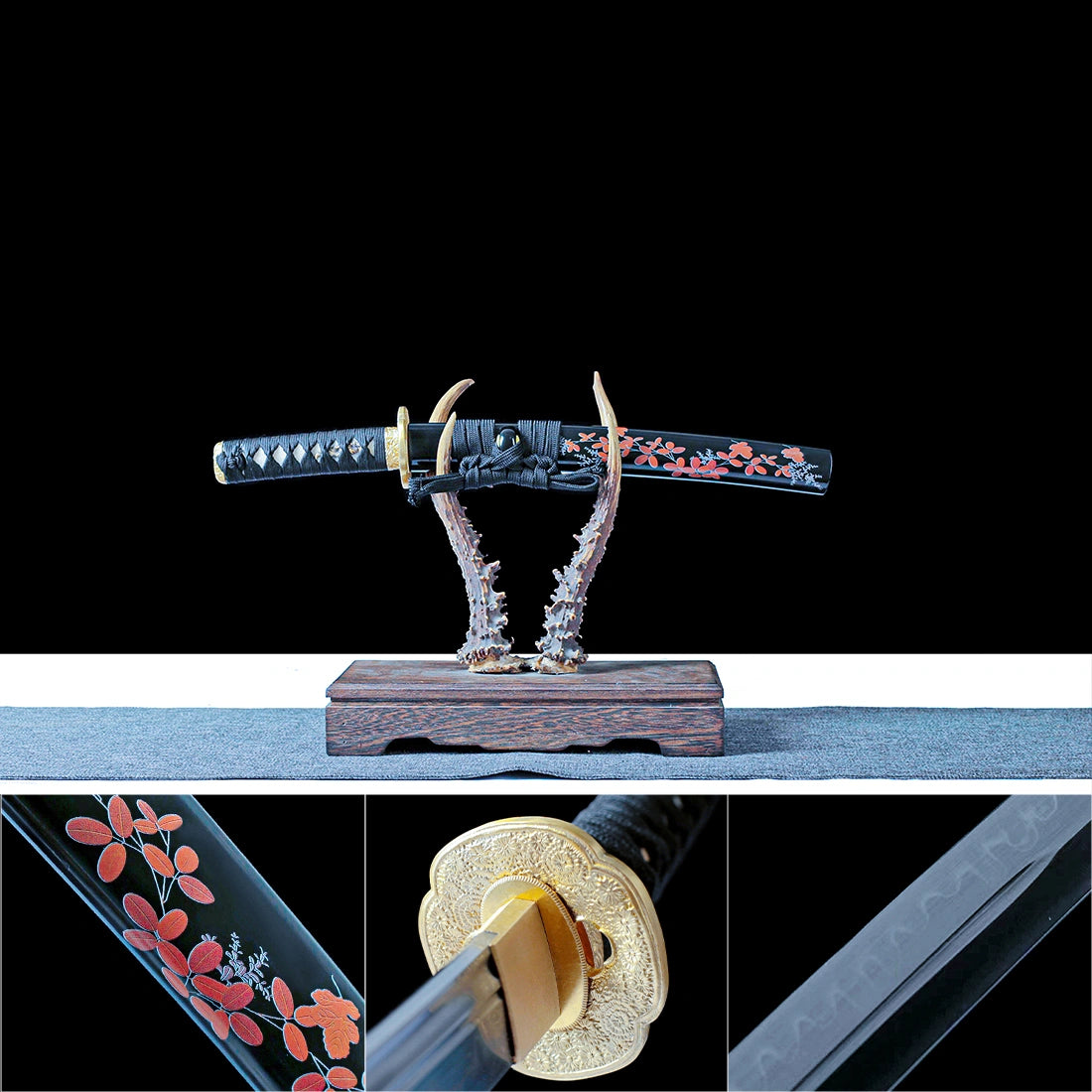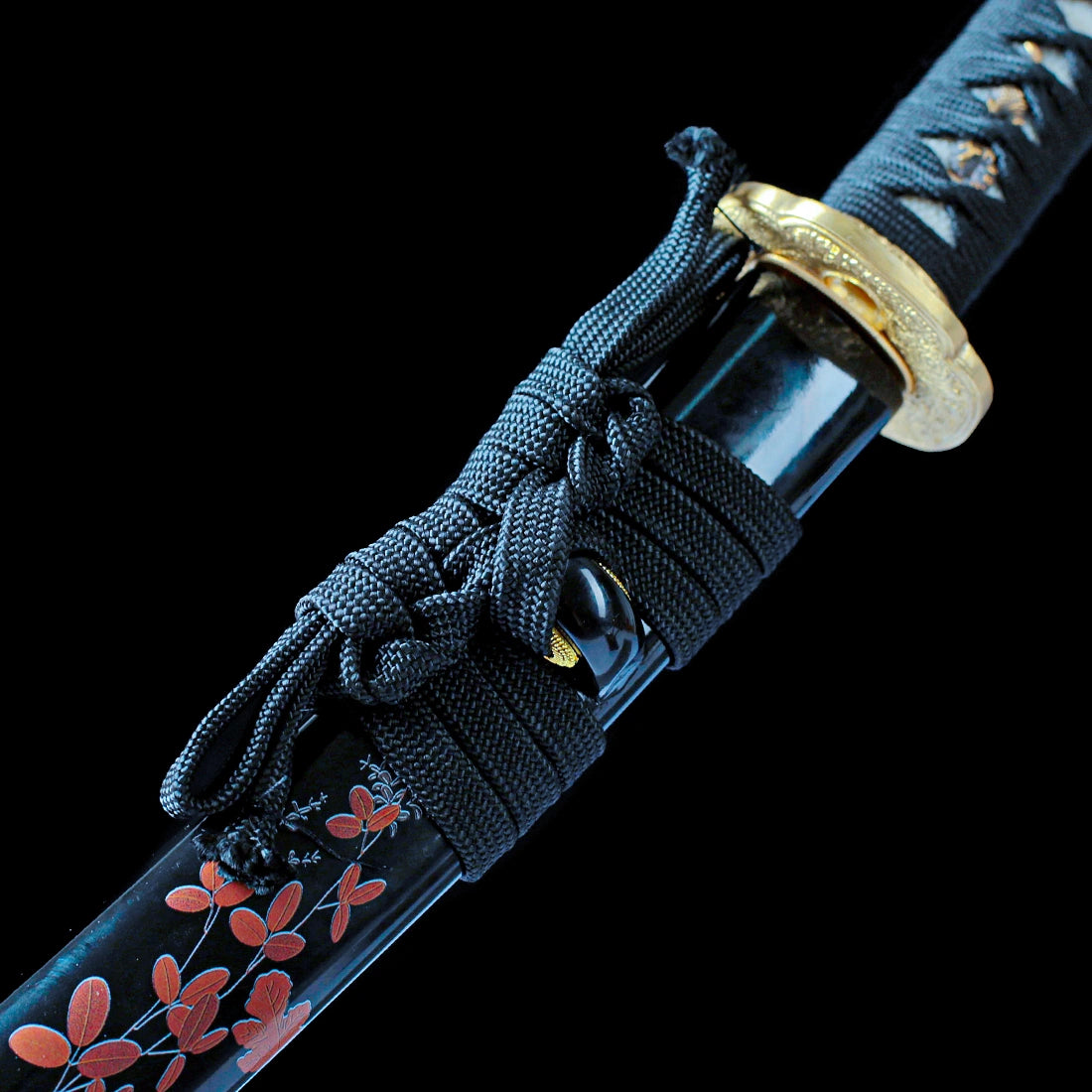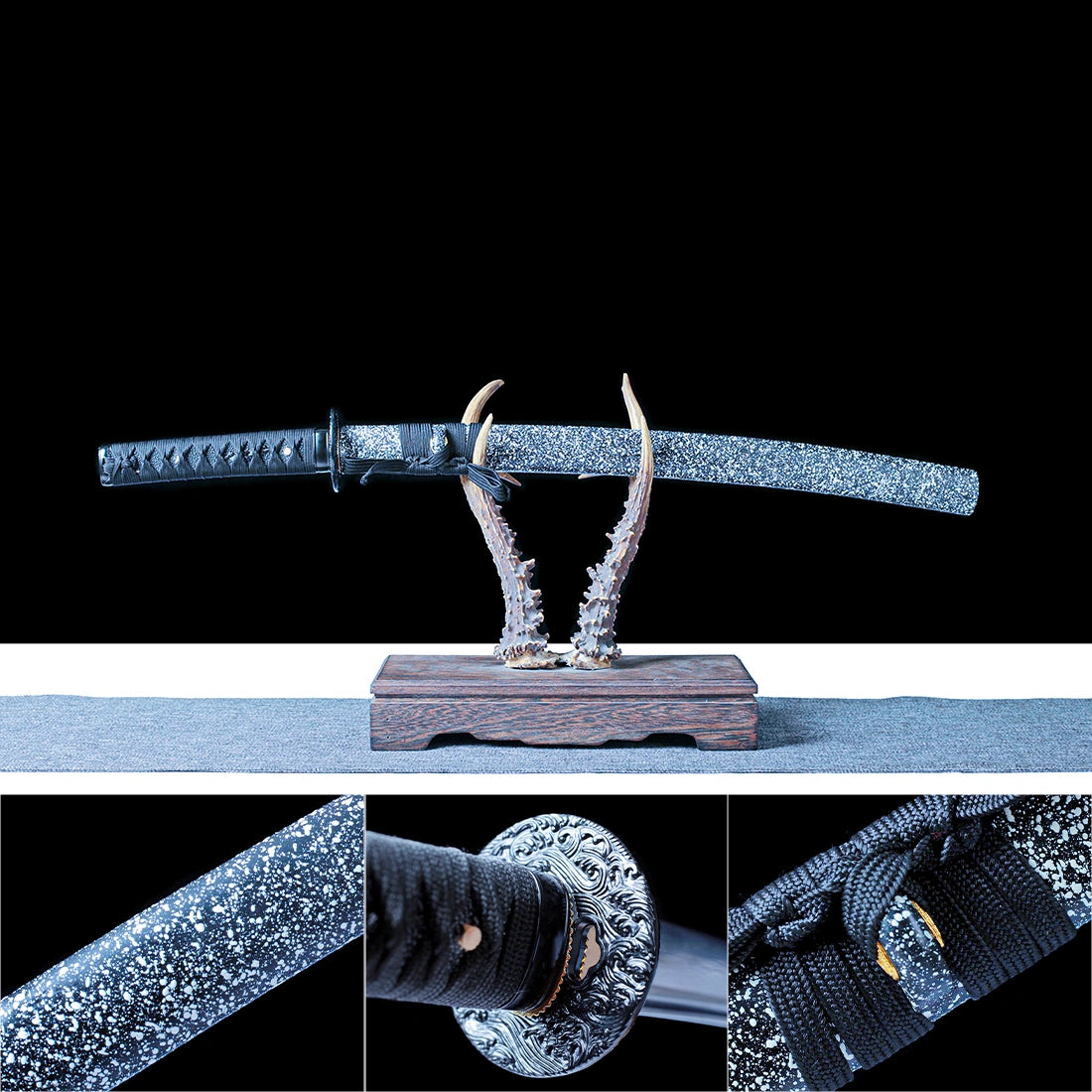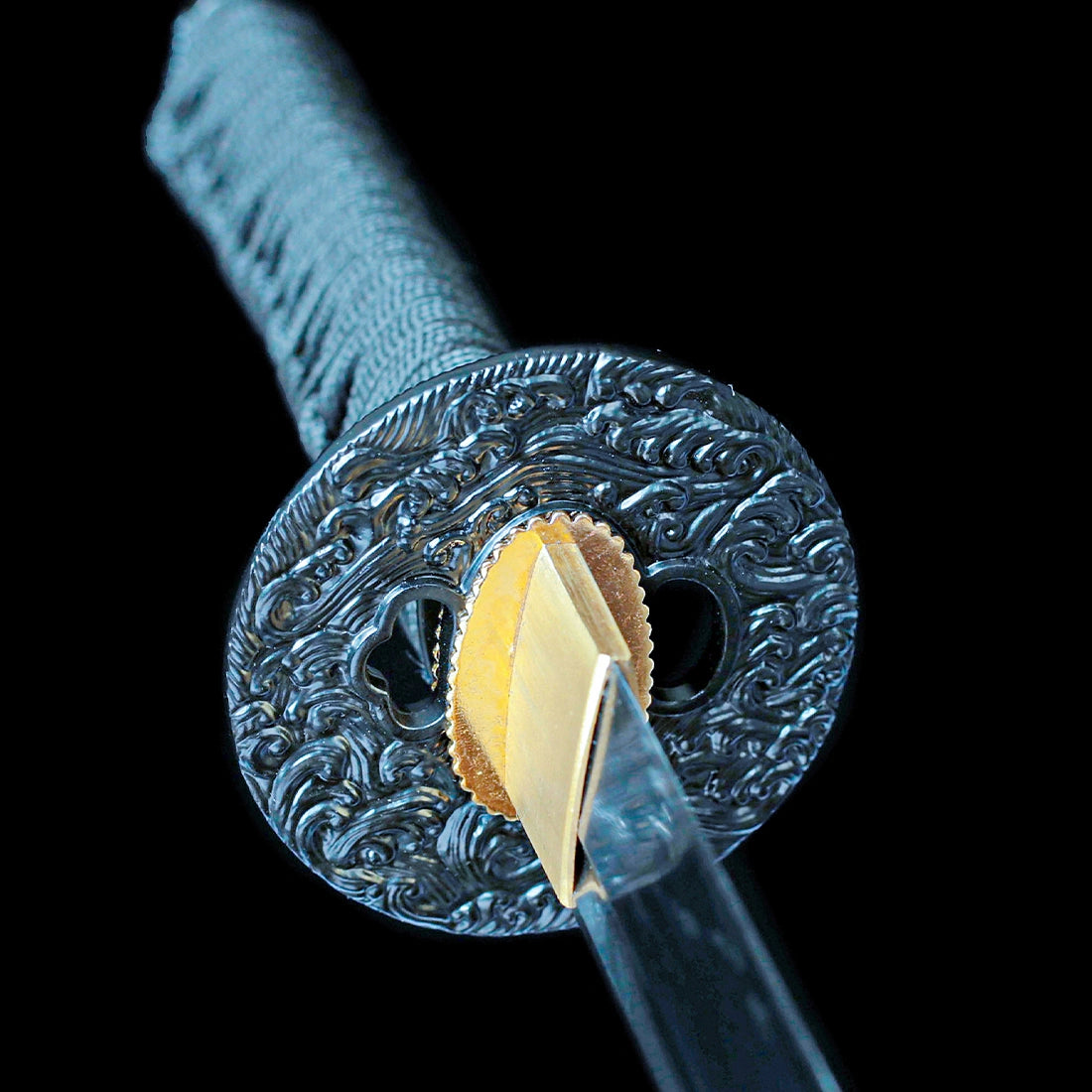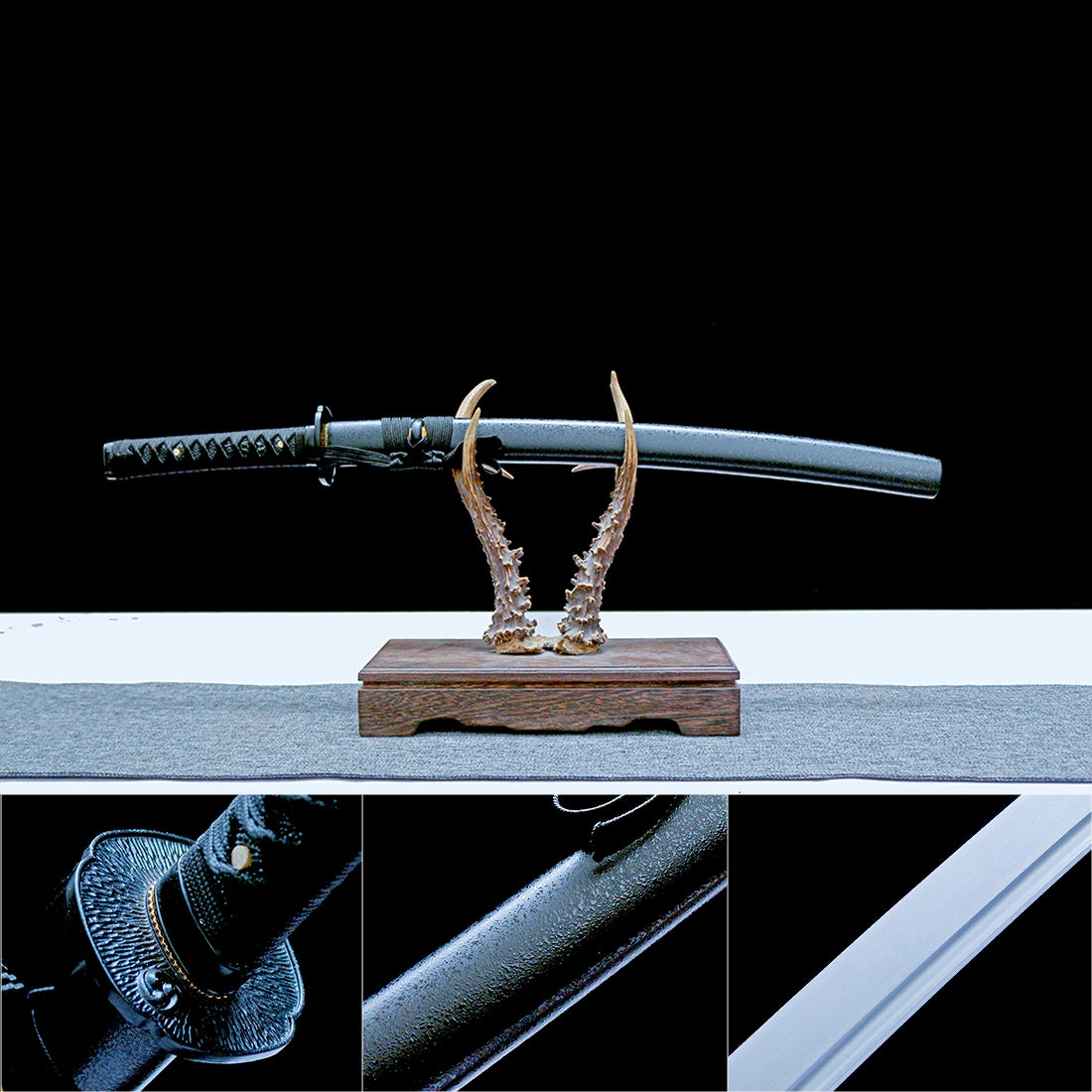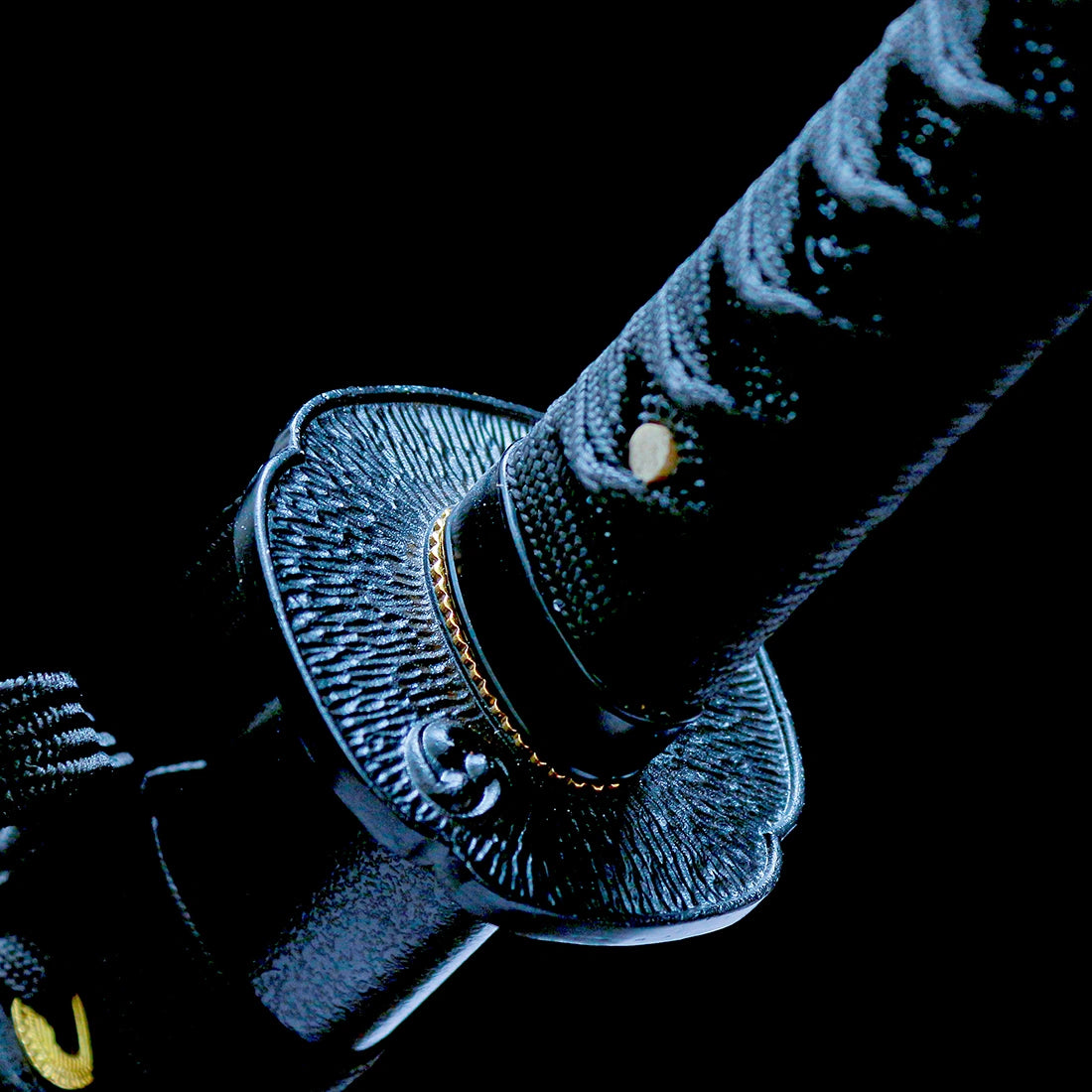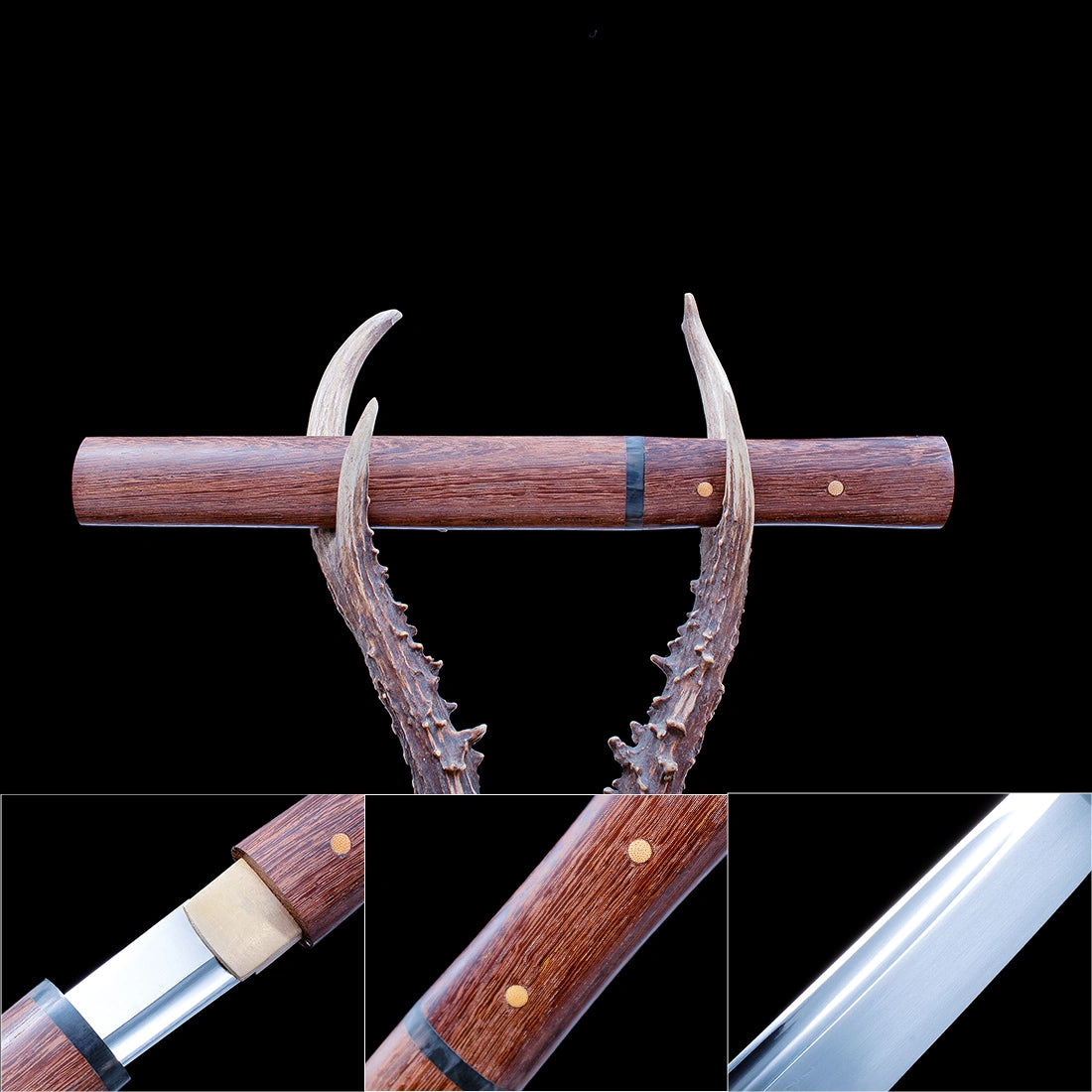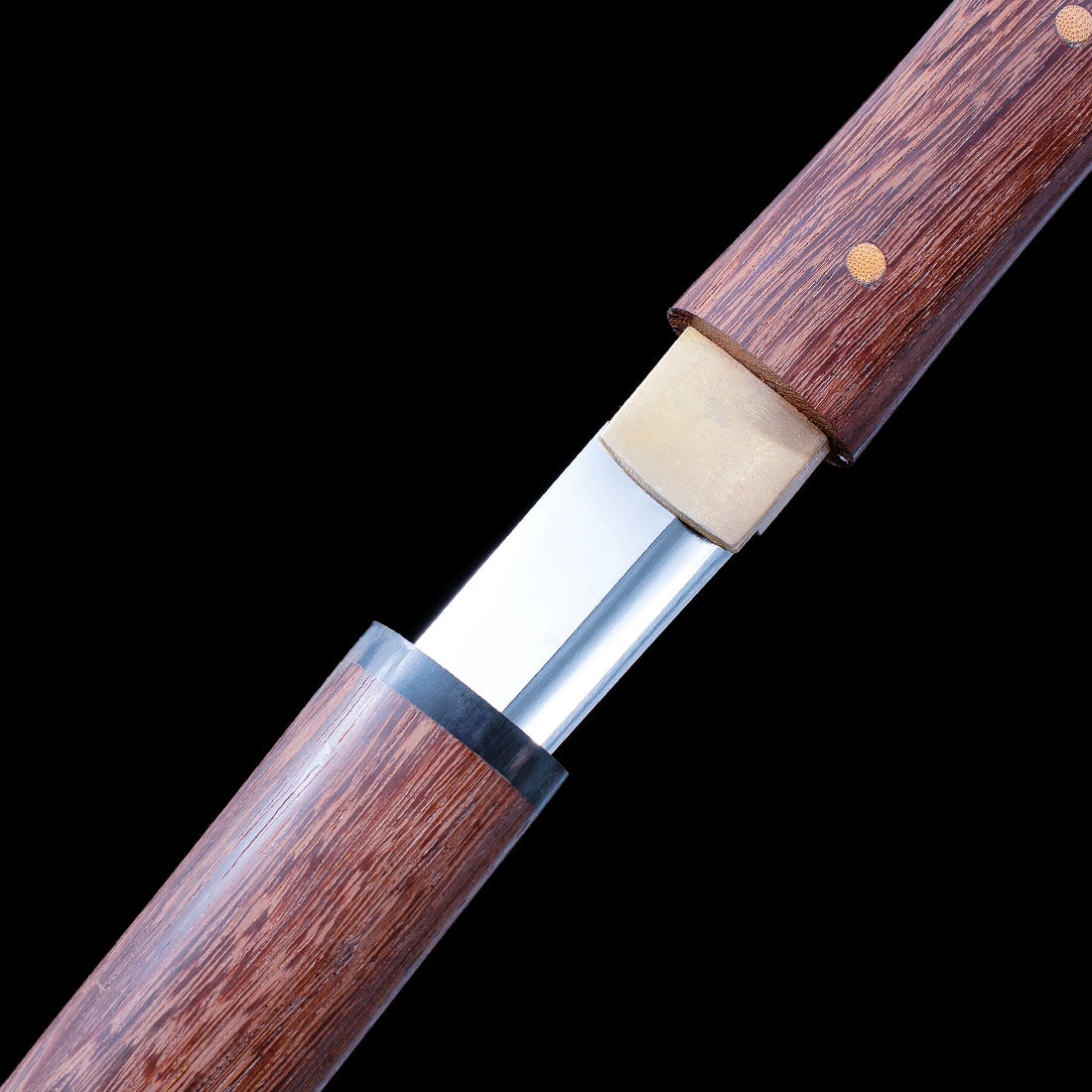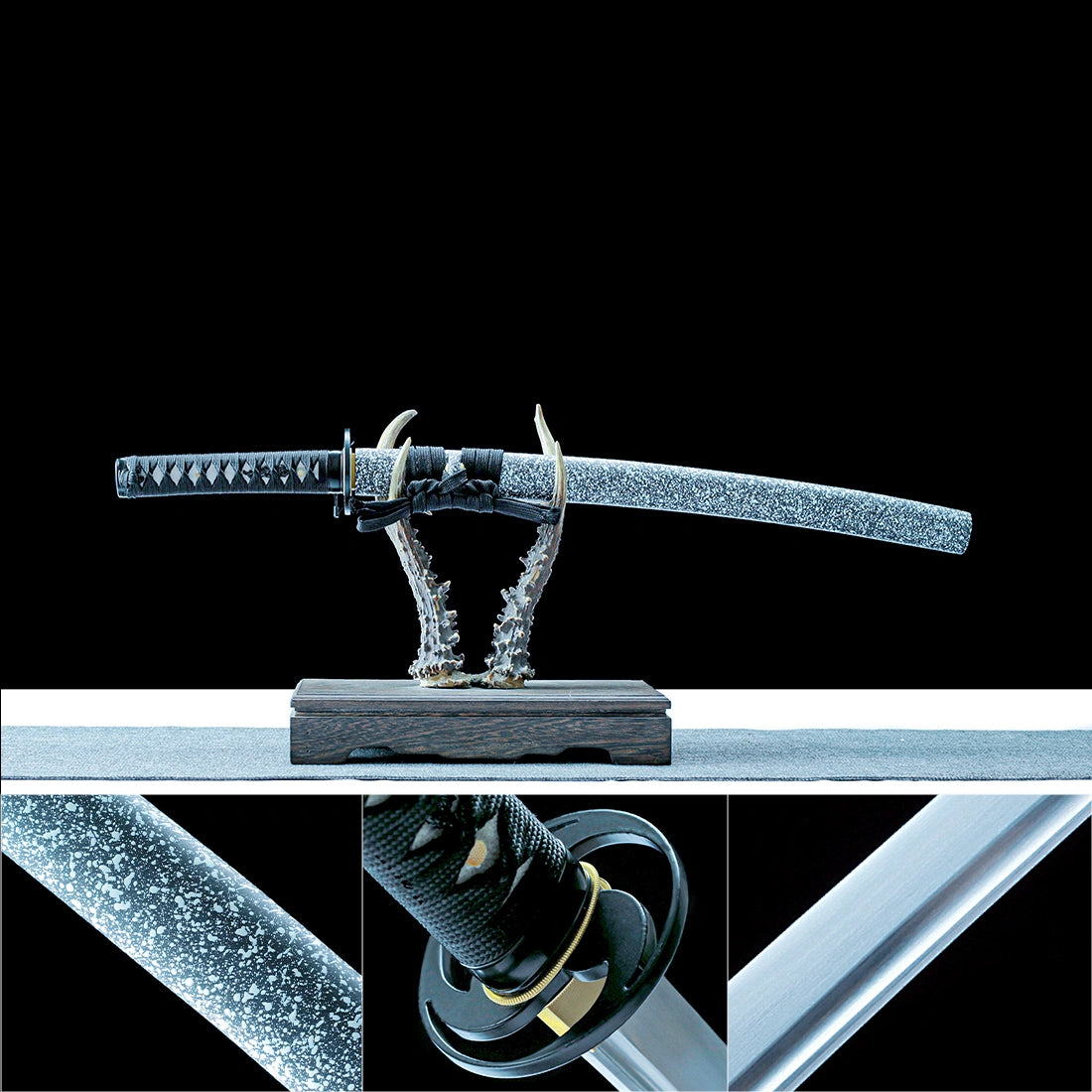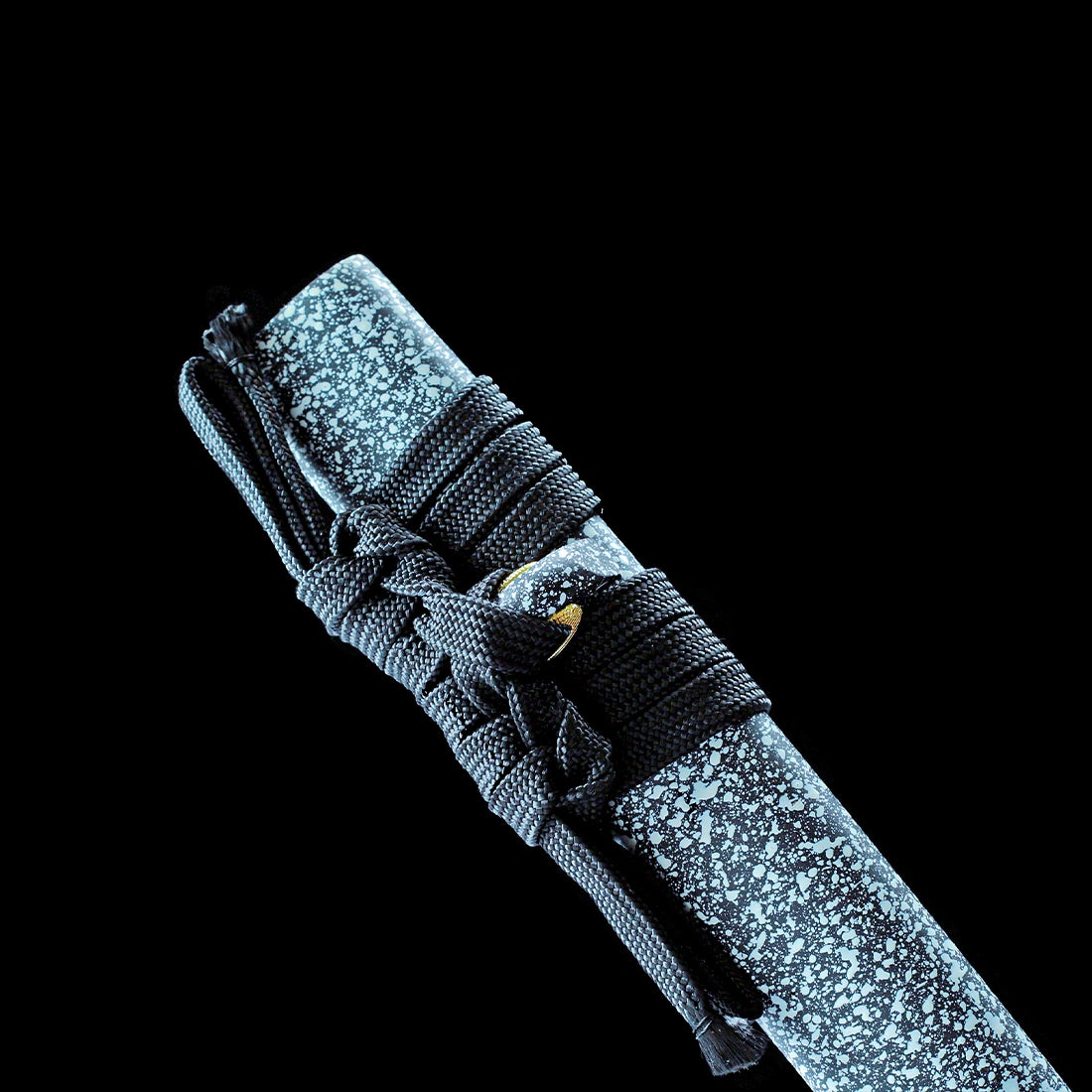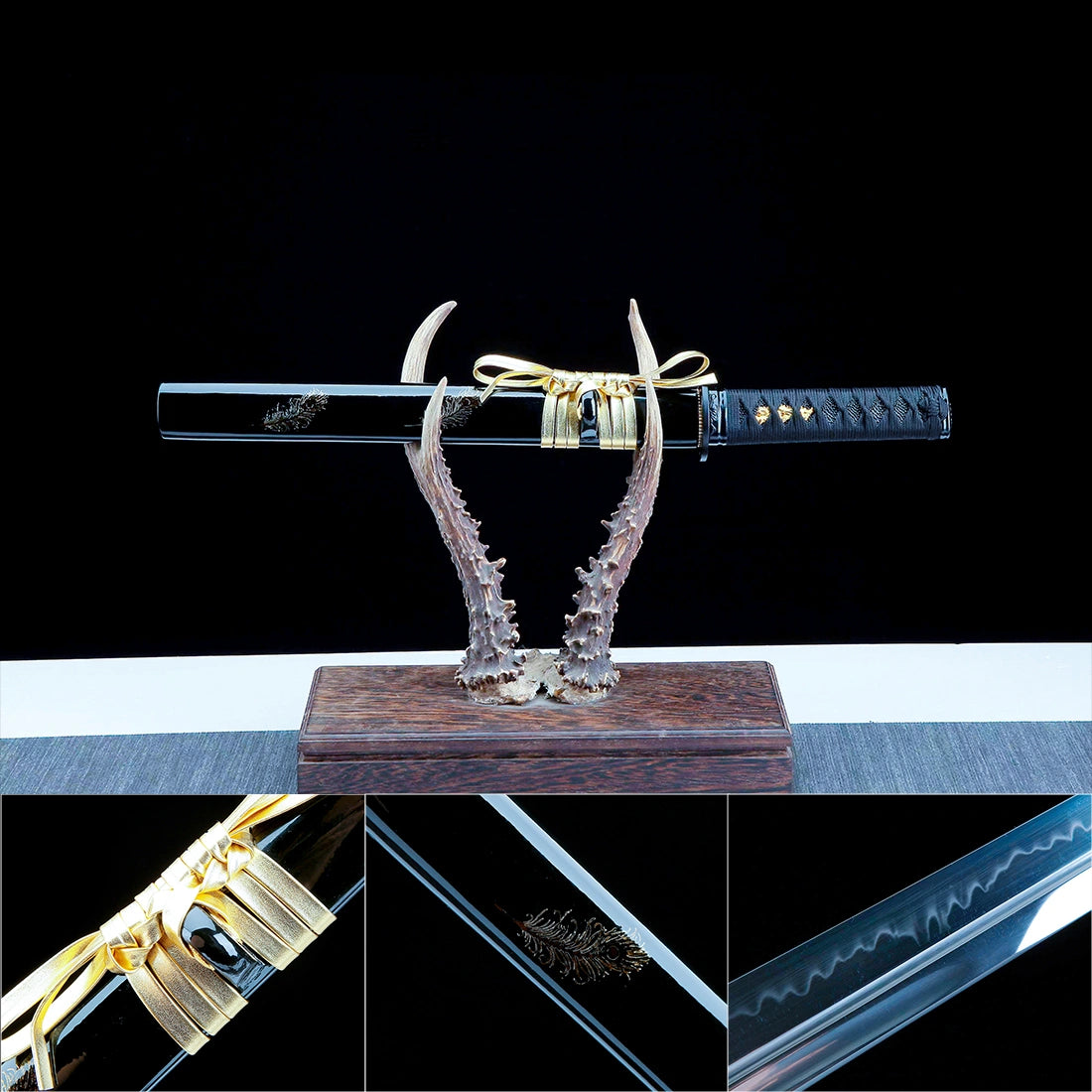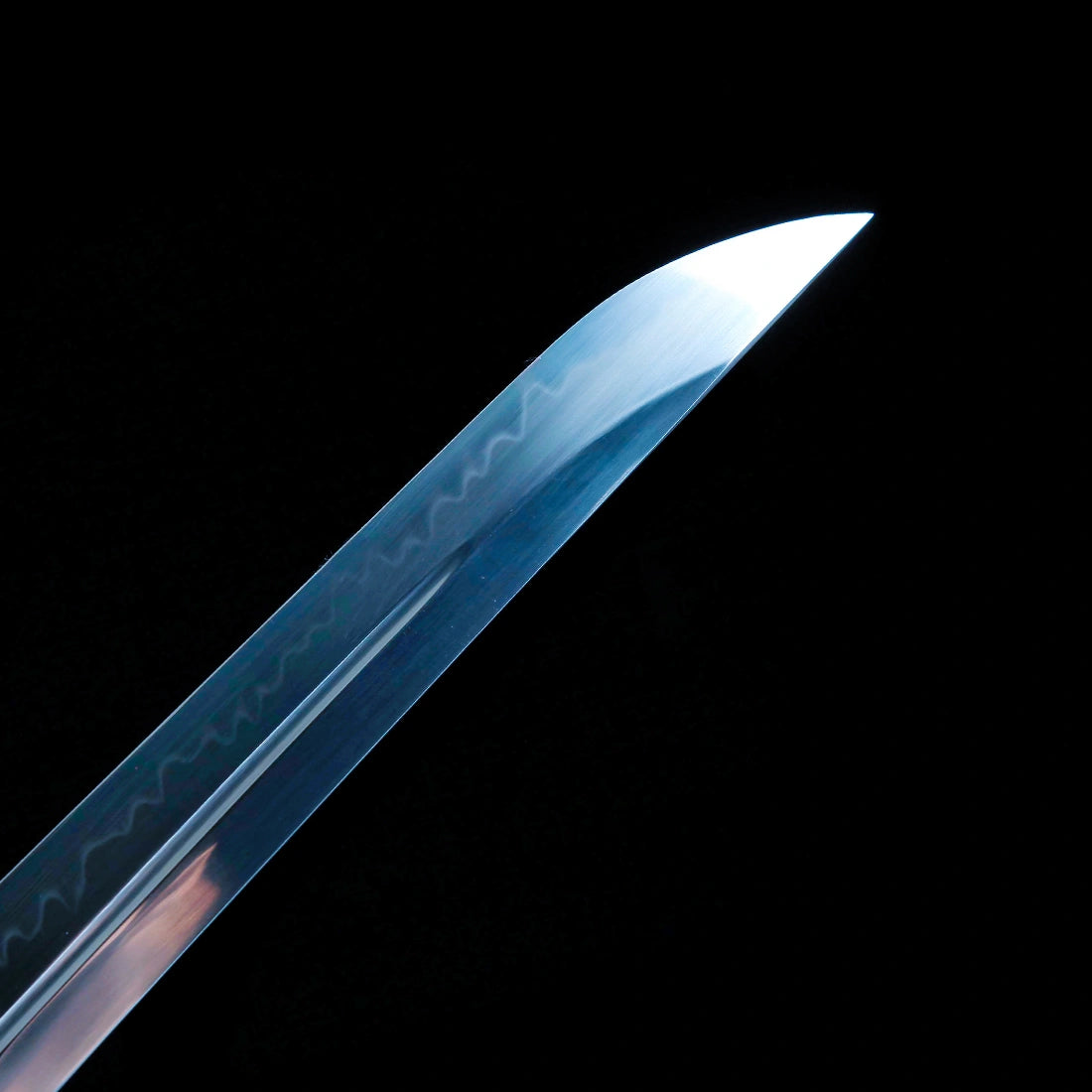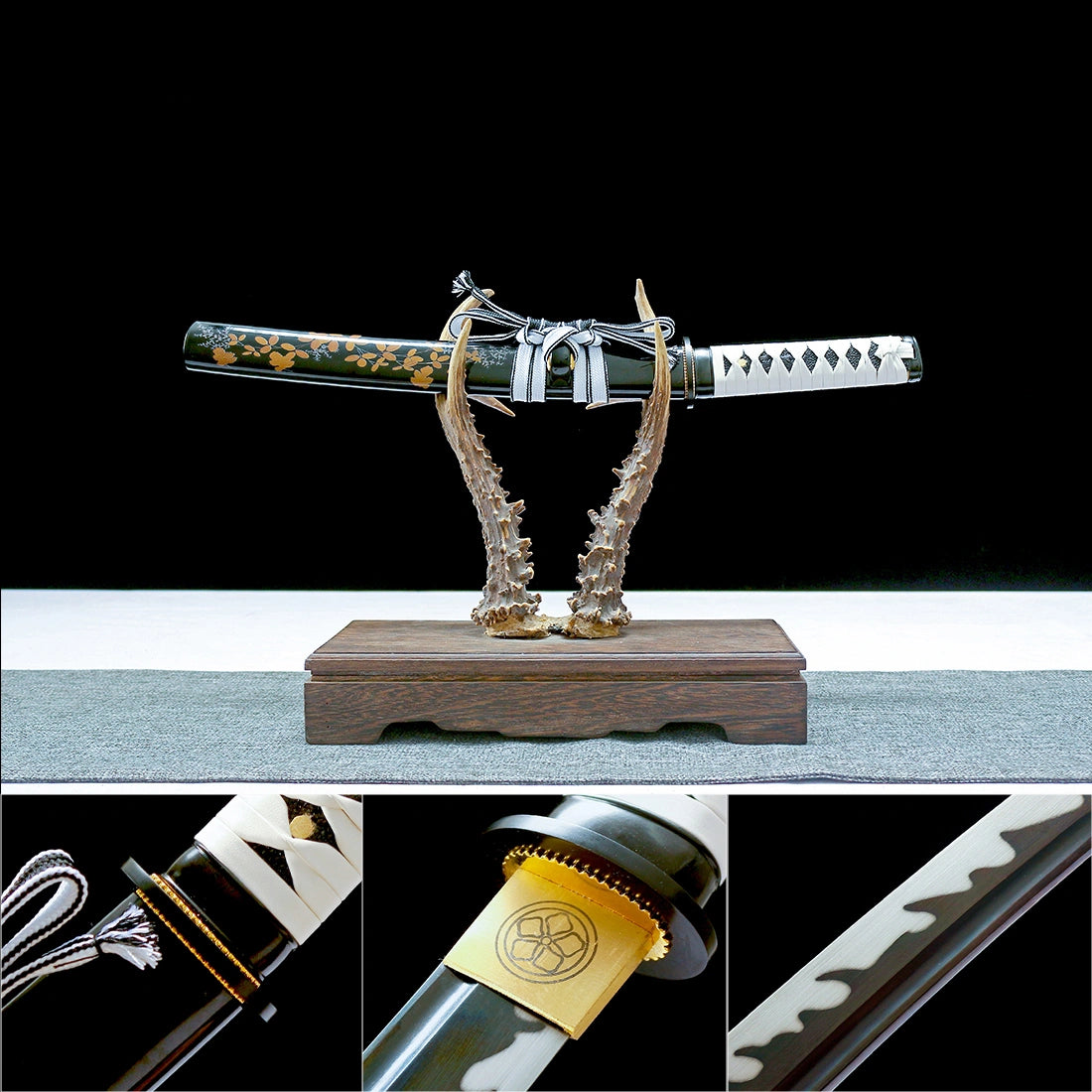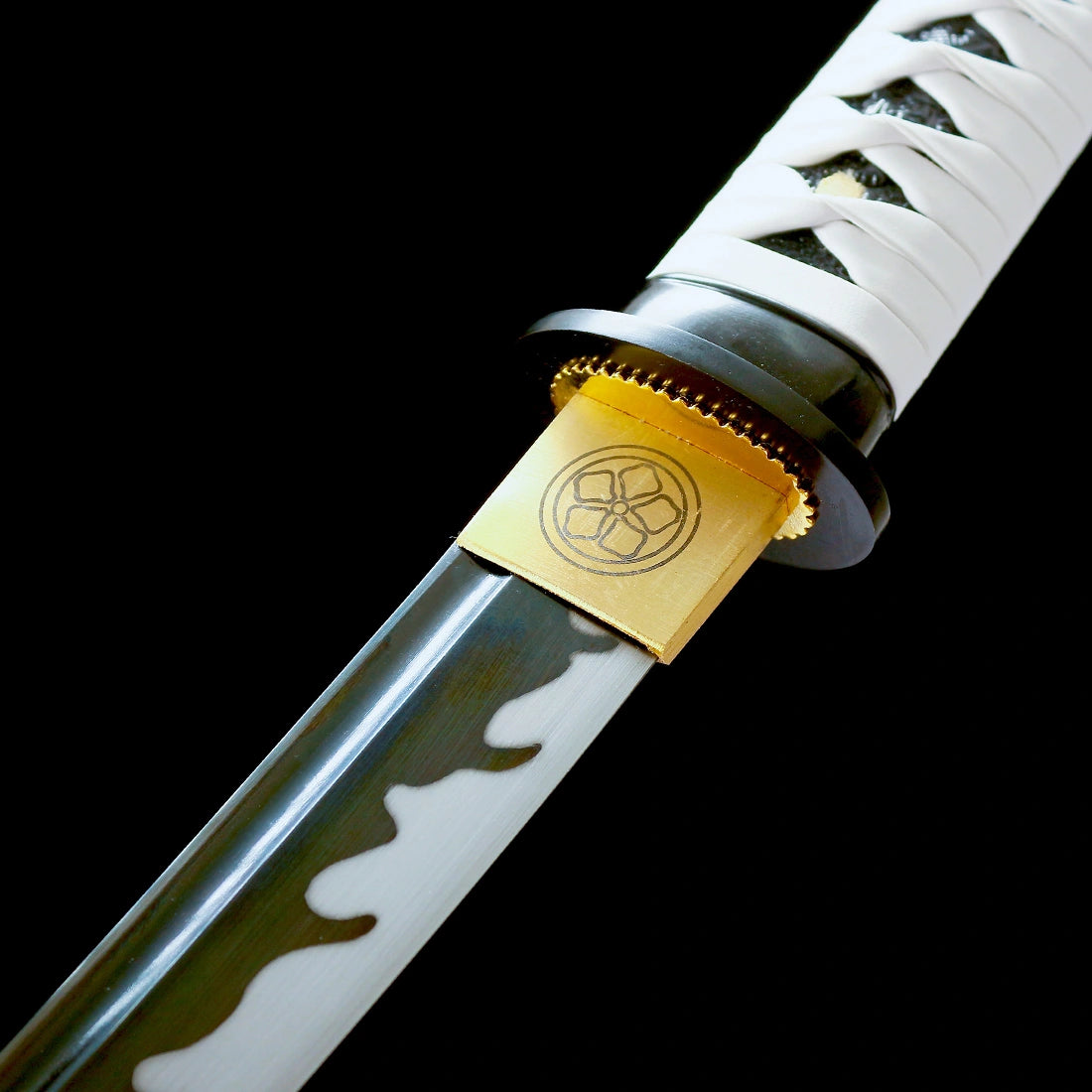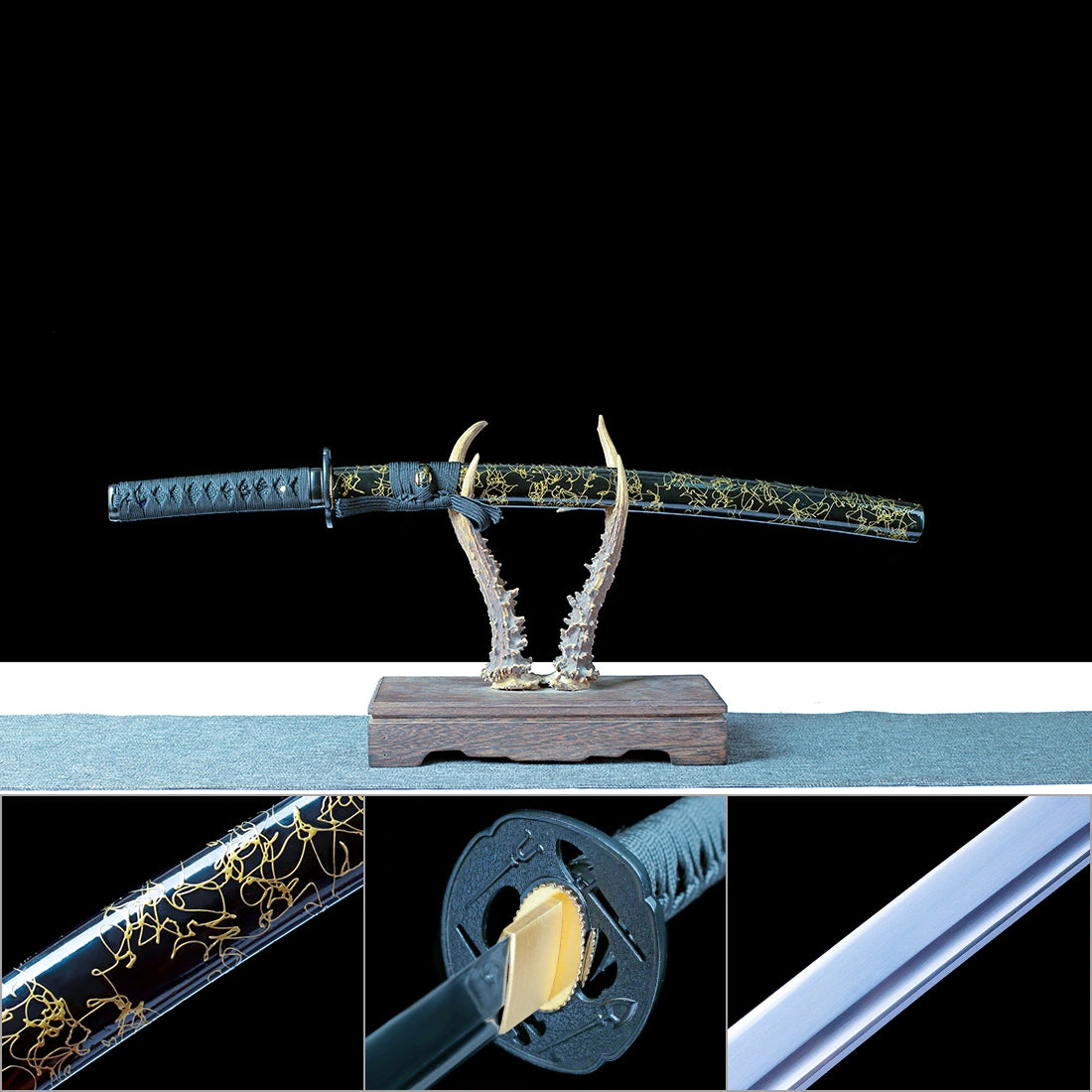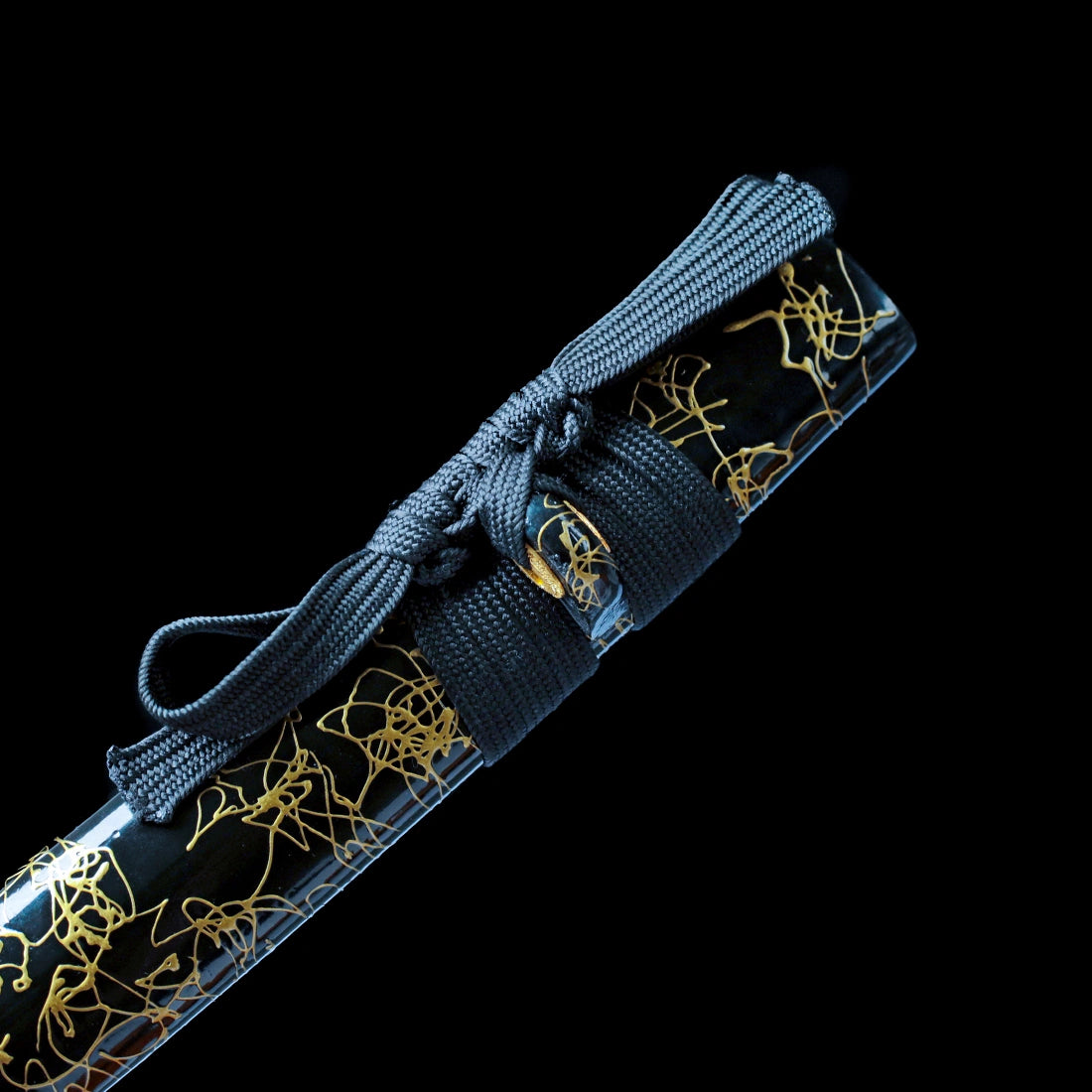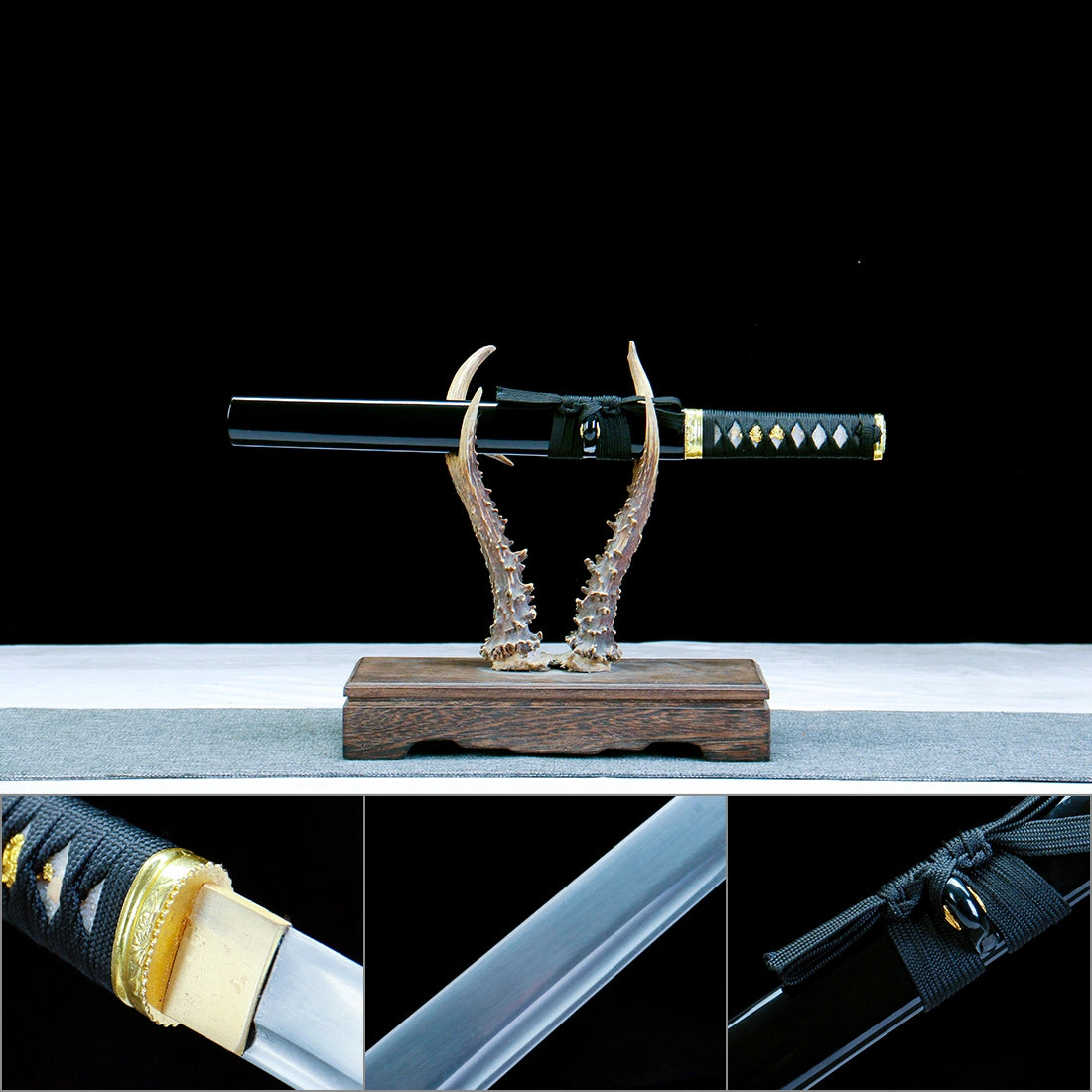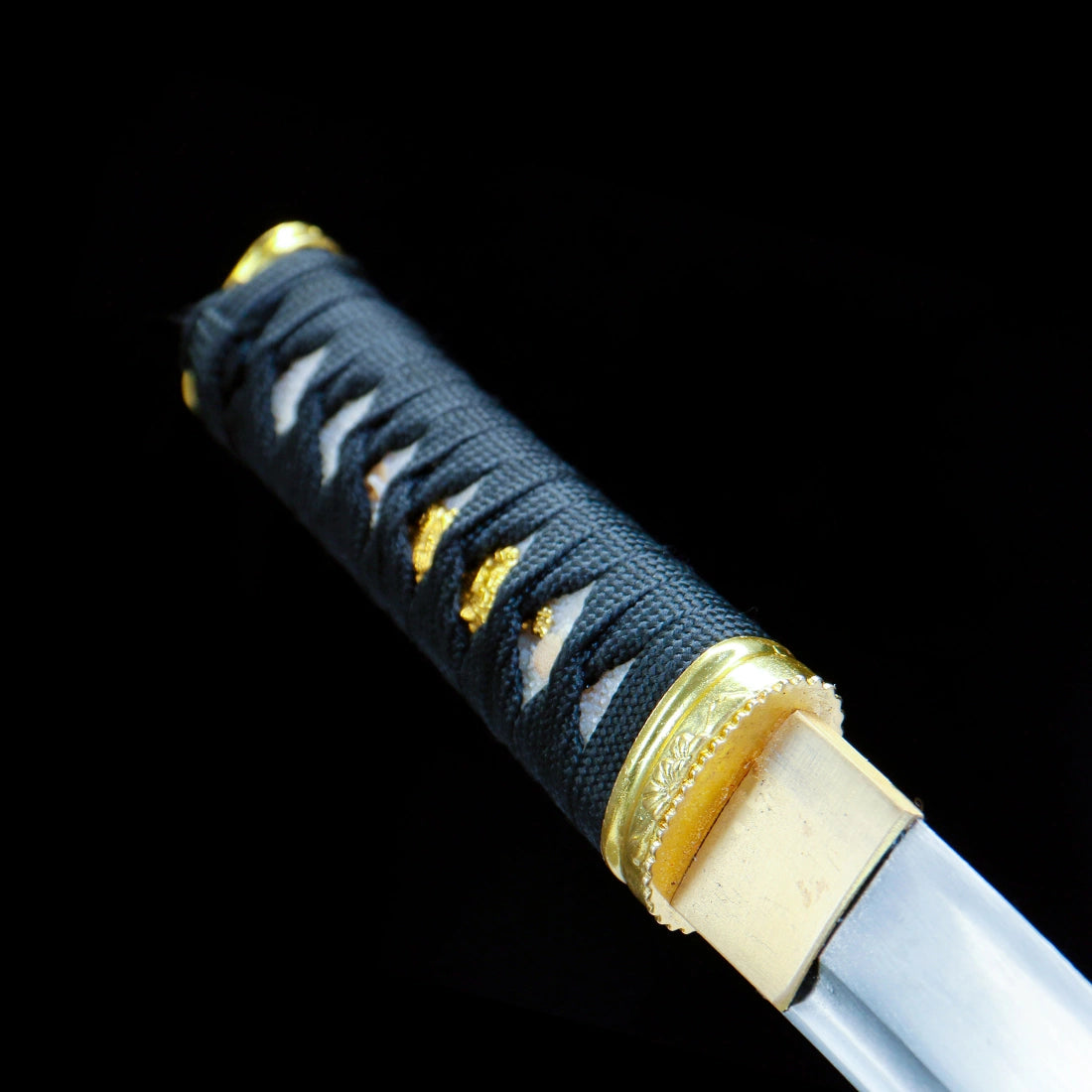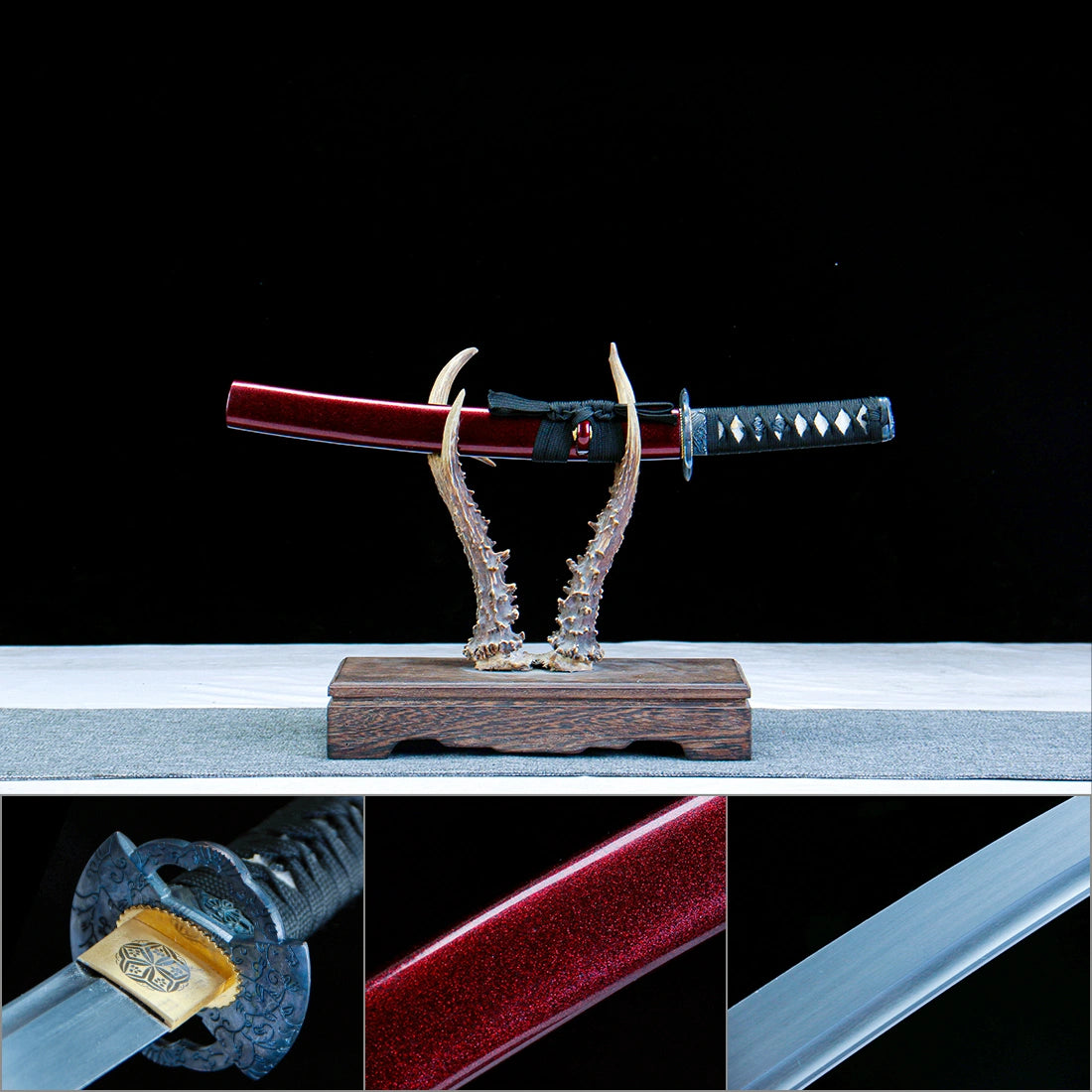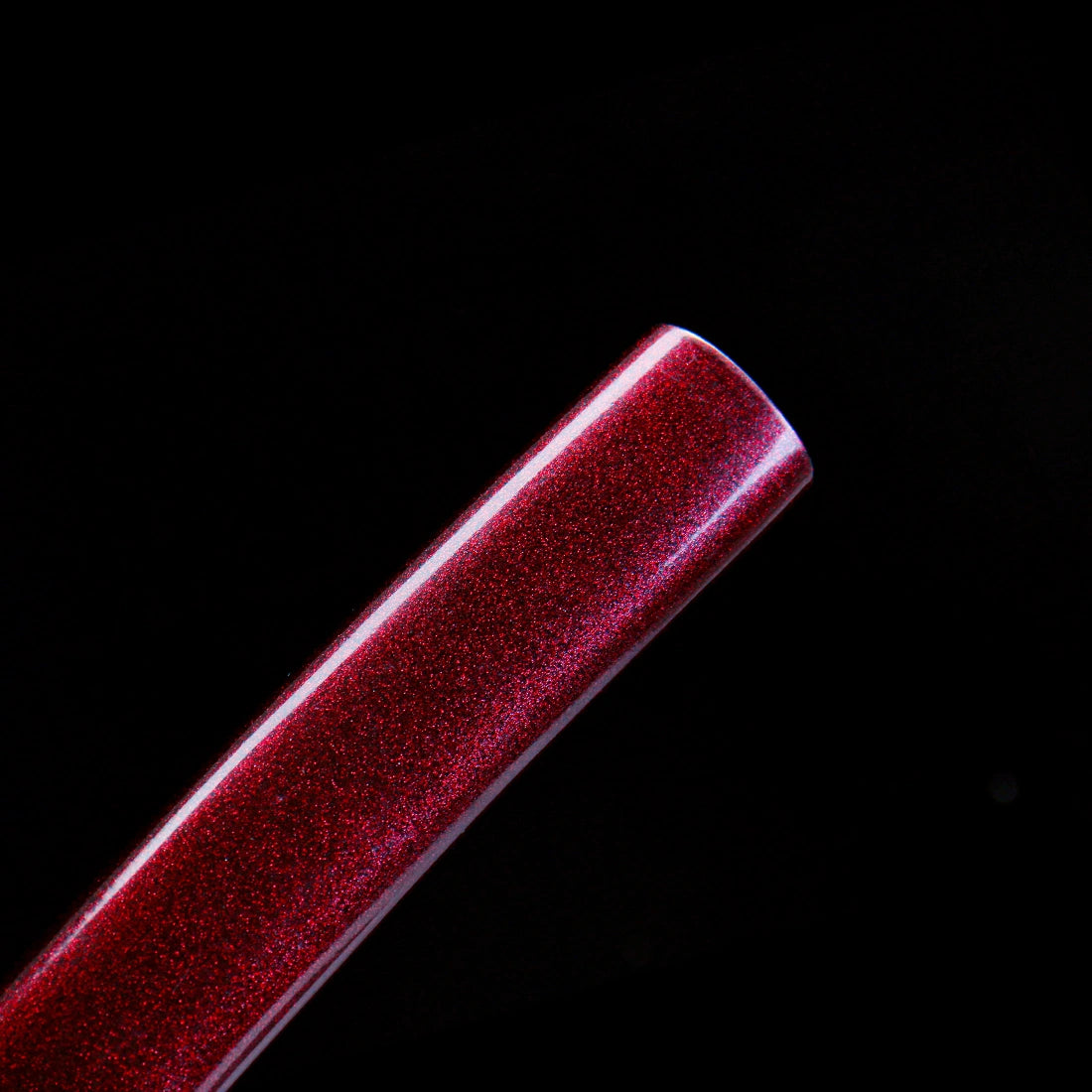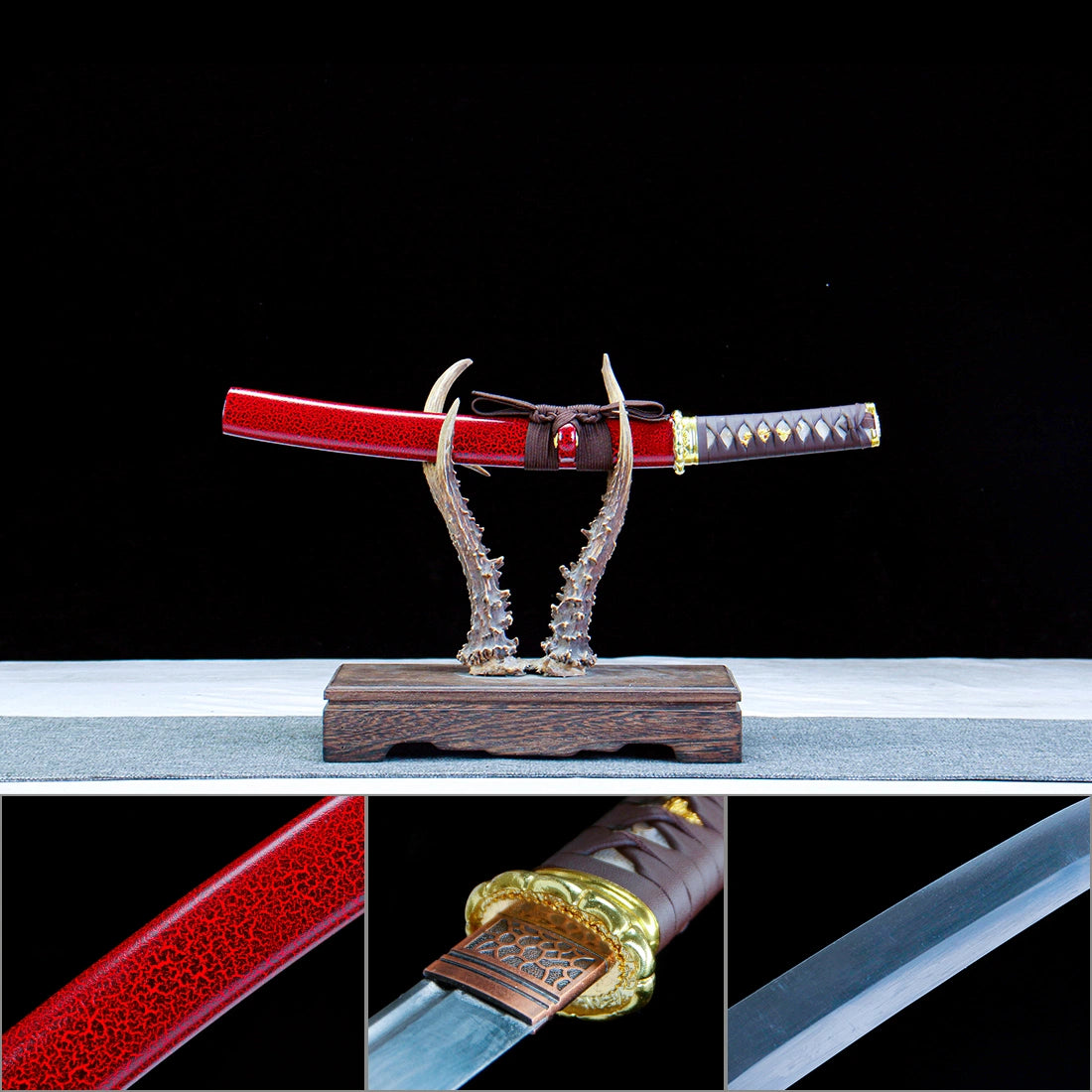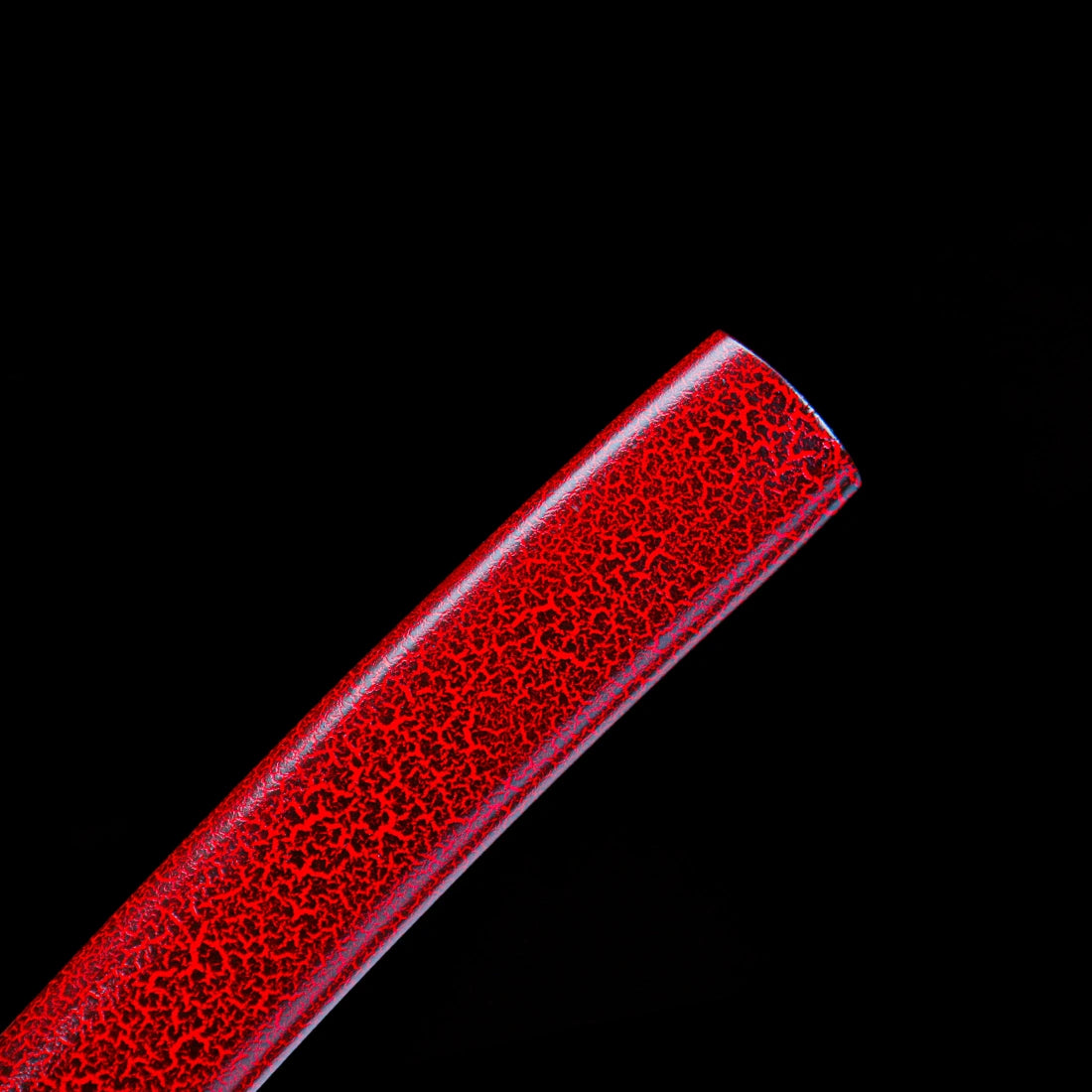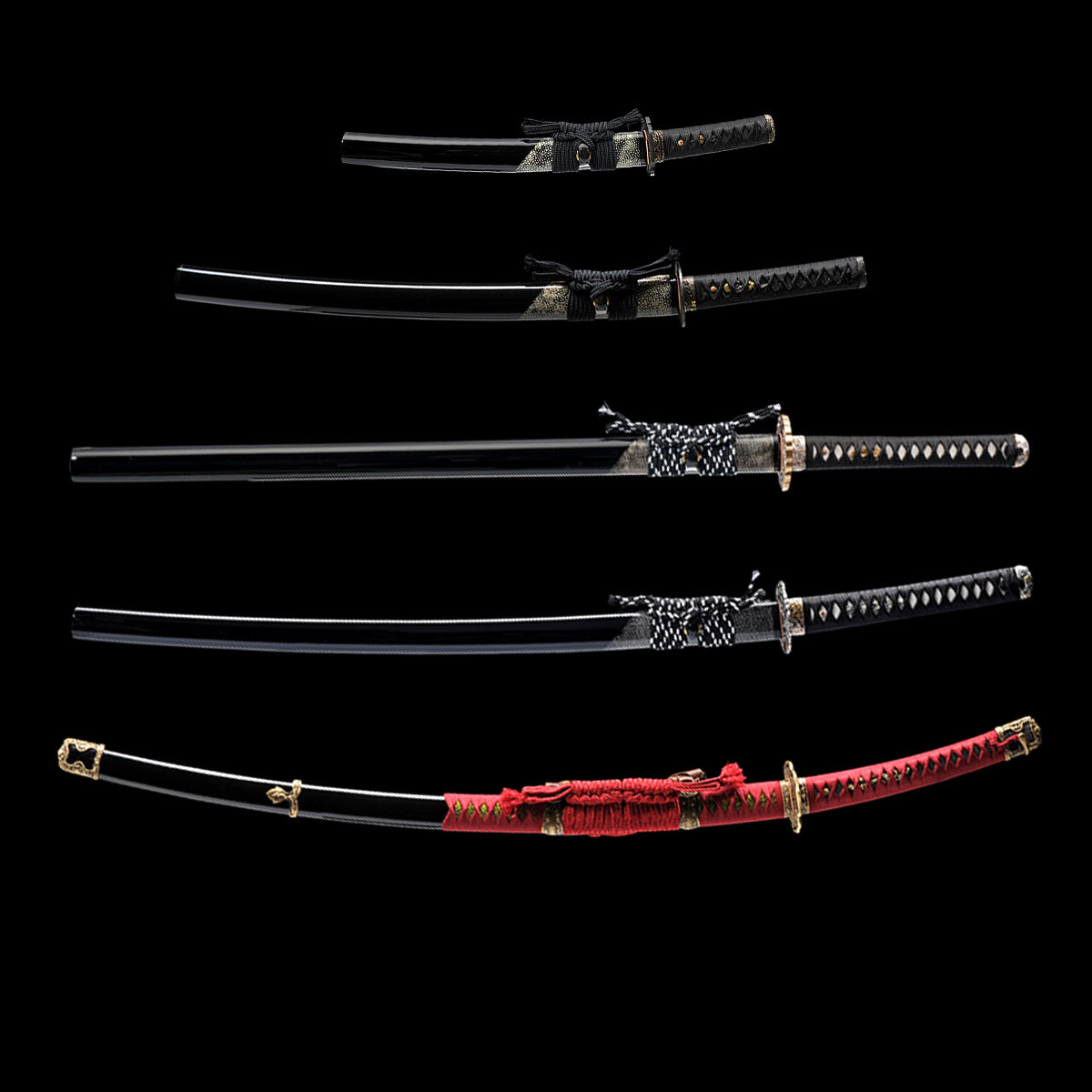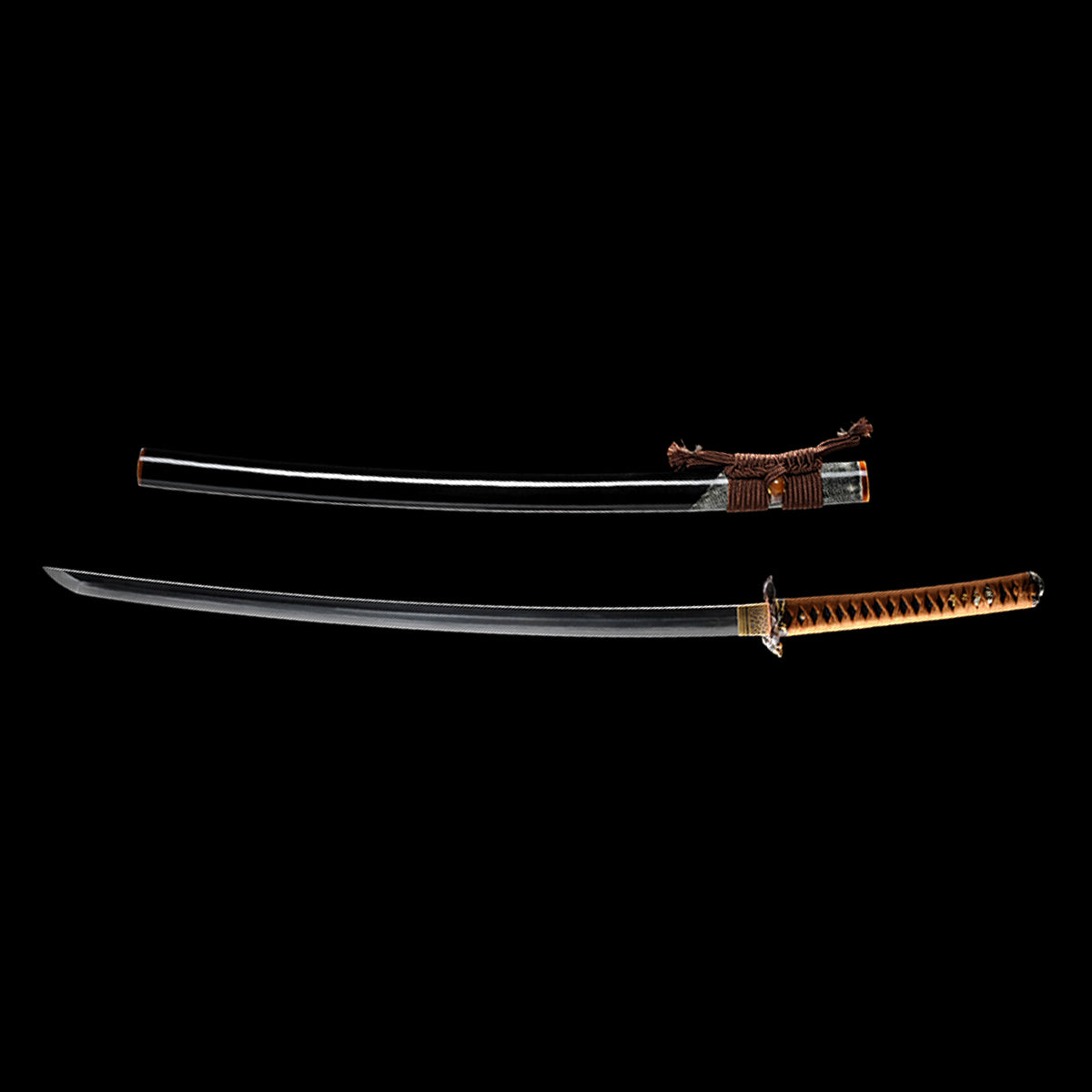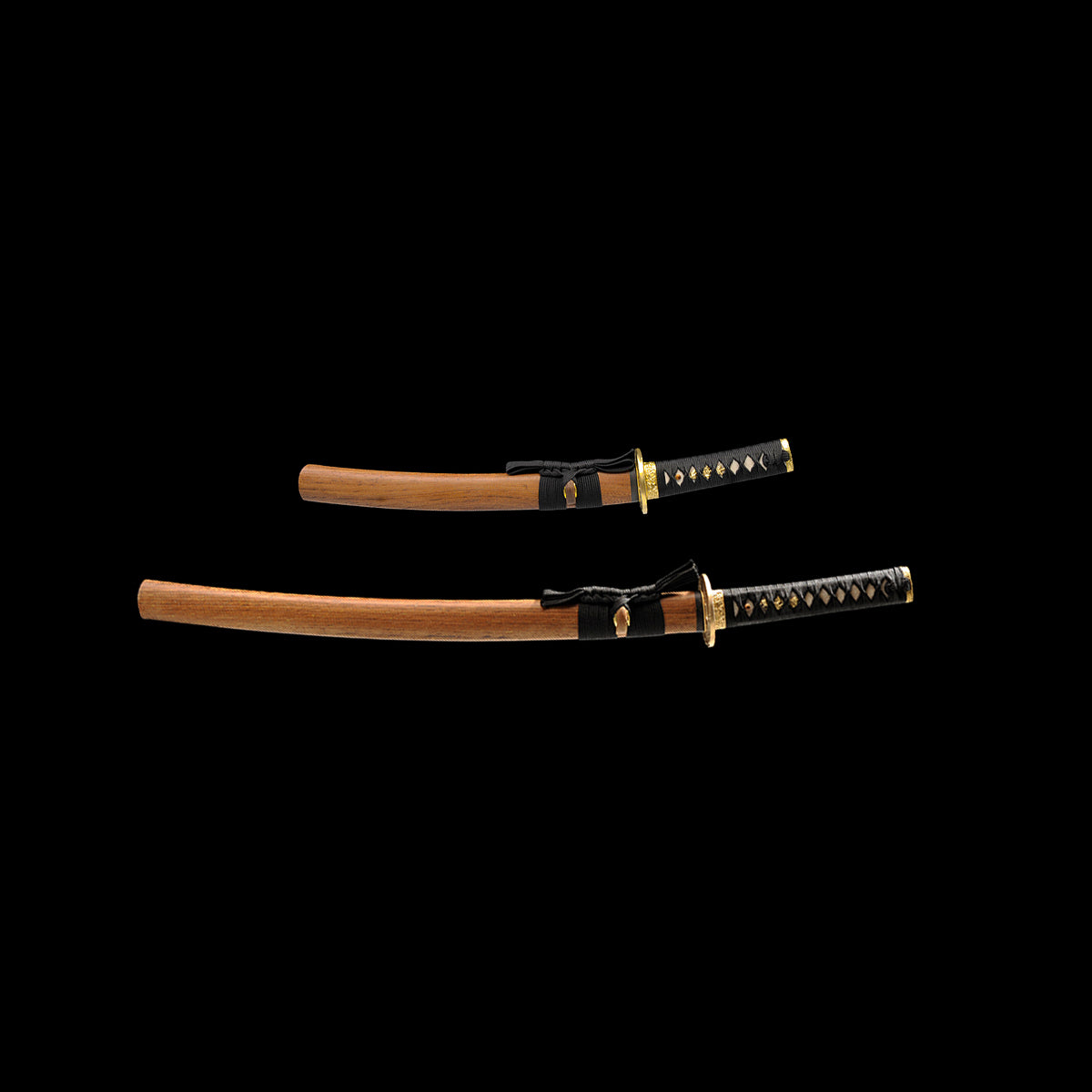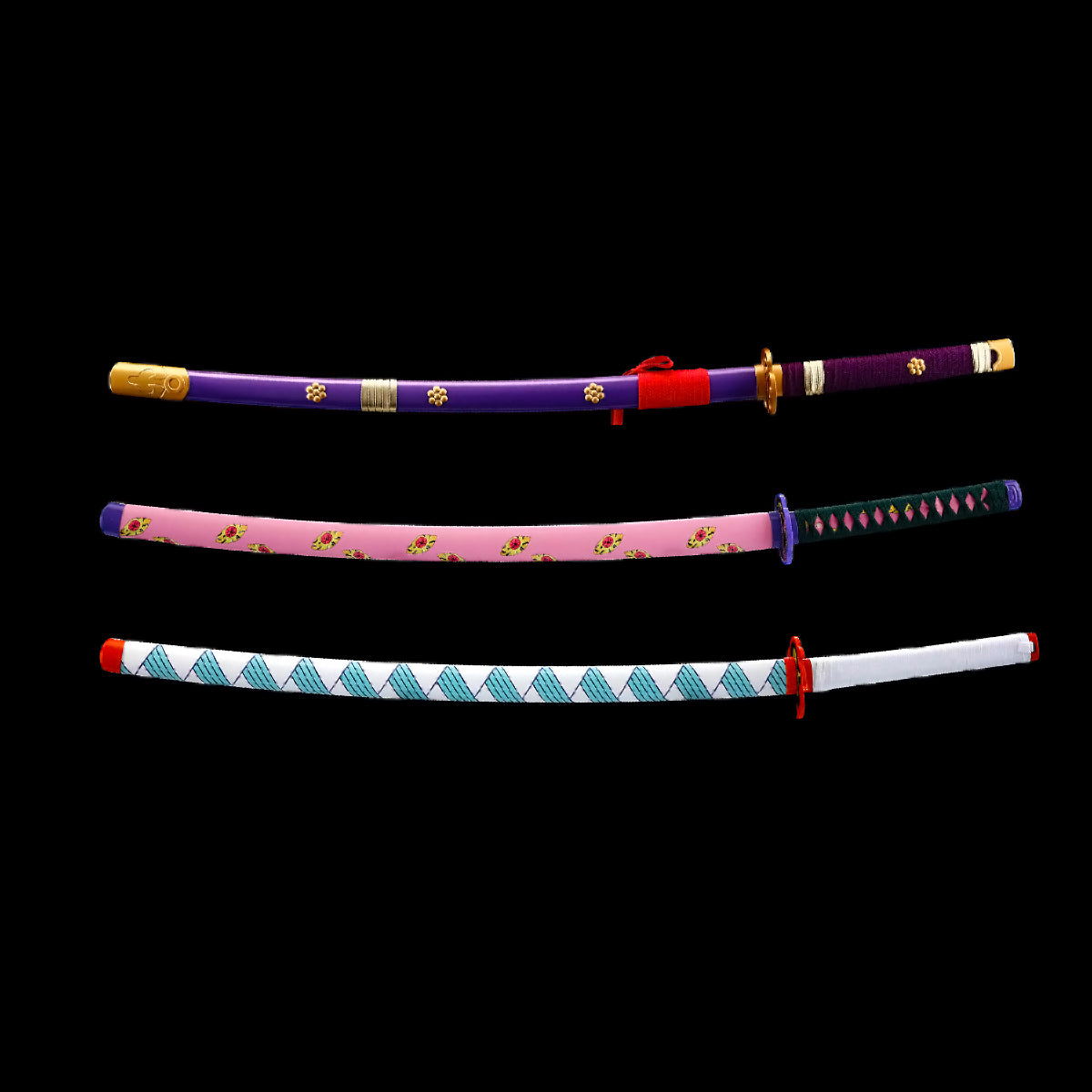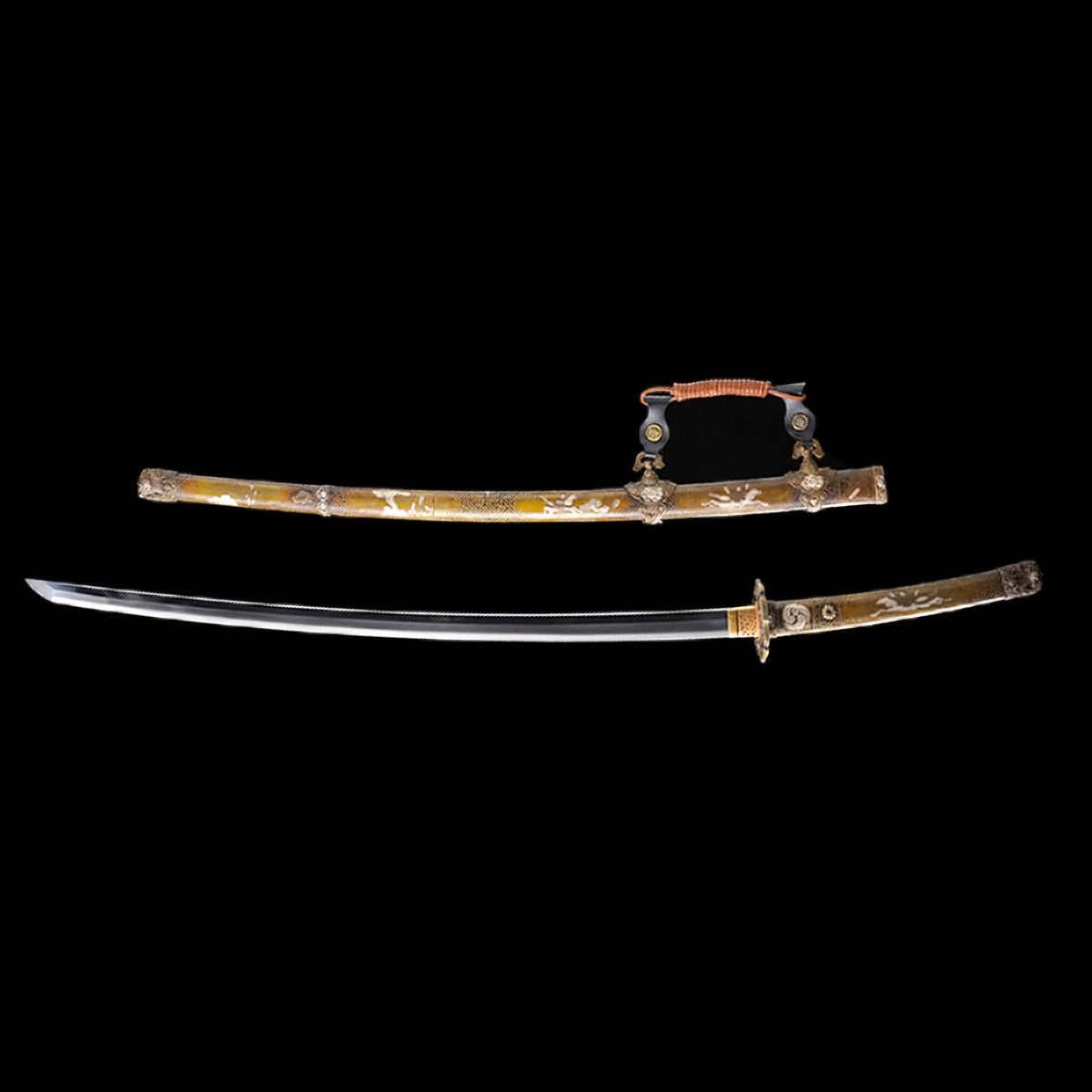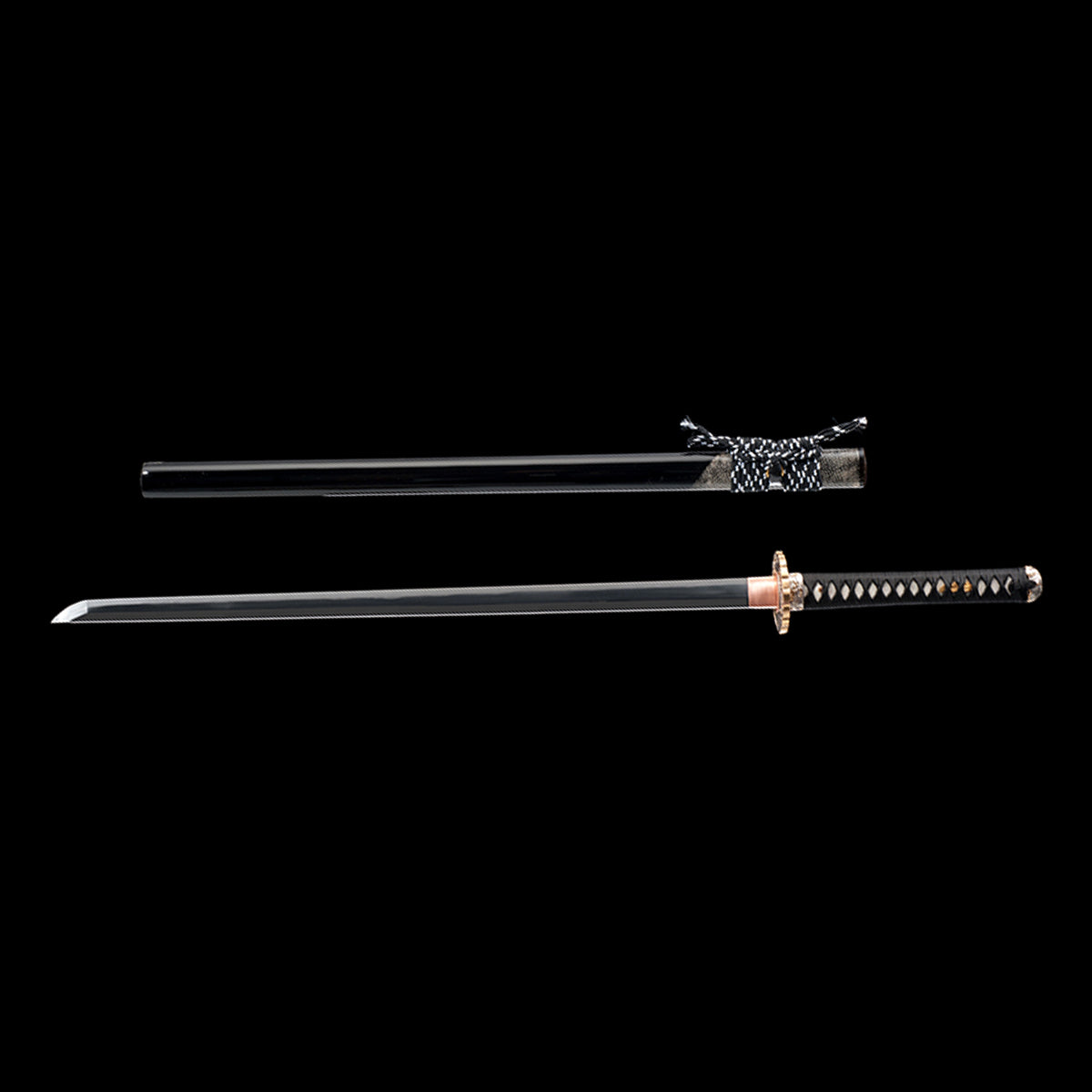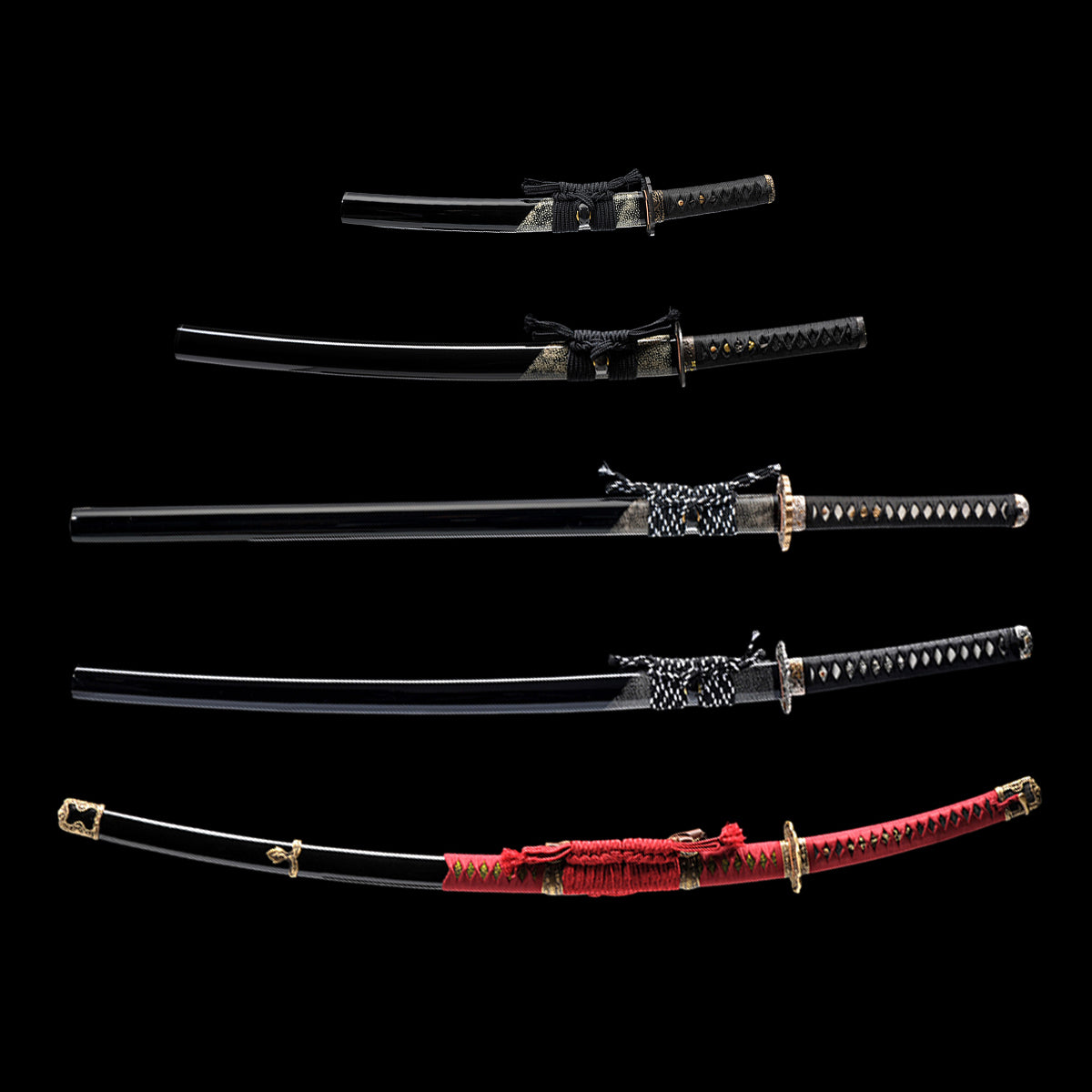FAQs
What was the point of a wakizashi?
What was the point of a wakizashi?
The Wakizashi (脇差): A Comprehensive Analysis of its Purpose and Significance
The wakizashi was far more than a "short sword" or a mere companion to the katana. It was a multifaceted tool, a potent symbol, and an integral component of the samurai's identity, both legally and spiritually. Its purpose evolved from a practical battlefield backup into a deeply nuanced element of Edo-period samurai culture, encompassing utility, social law, and personal honor.
1. The Foundational Definition: A Legal and Physical Object
- Classification: The wakizashi is classified as a shōtō (小刀), or "short sword." Its defining characteristic is its blade length (nagasa), which measures between 1 and 2 shaku (approximately 30.3 cm to 60.6 cm / 11.9 to 23.9 inches).
- The Daishō (大小): When paired with a long sword (daitō—either a katana or tachi), the pair was known as the daishō, which translates to "big-little." This paired set was the ultimate symbol of the samurai class.
2. Practical and Tactical Functions
The wakizashi's design made it exceptionally versatile in a variety of scenarios.
- Close-Quarters Combat (室内戦闘 - Shitsunai Sentō): The primary tactical advantage of the wakizashi was its use in confined spaces. Inside a building, castle corridor, or on a ship, the longer katana was often too cumbersome to draw or swing effectively. The wakizashi's shorter length allowed for rapid deployment, stabbing, and slashing in tight quarters. Schools of swordsmanship (ryūha) contained specific techniques for indoor combat using the wakizashi.
- Backup Weapon: On the battlefield, if a samurai's primary katana was lost, broken, or otherwise rendered unusable, the wakizashi served as an immediate and crucial secondary weapon. It was always at hand, ensuring the warrior was never truly disarmed.
- Utility and Battlefield Function: The wakizashi had several grimly practical uses:Beheading (Kubi-jikken - 首実検): After defeating a high-ranking opponent, it was customary to take their head as a trophy and for identification to claim credit for the kill. The wakizashi was the ideal tool for this gruesome task, as using the longer, more prized katana for such grunt work was considered impractical and undignified.Close-Range Killing: In the press of battle, particularly against an armored opponent, the wakizashi could be used to thrust into vulnerable gaps in the armor (yoroimusubi).
- Paired-Sword Techniques (Nitoryū - 二刀流): While not the primary reason for its existence, some famous schools, most notably Miyamoto Musashi's Hyōhō Niten Ichi-ryū (兵法二天一流), developed techniques for simultaneously wielding both the katana and the wakizashi. The longer sword was used for offense and distance, while the shorter was used for parrying, deflecting, and close-in strikes.
3. The Social and Legal Function: The Symbol of Status
This is perhaps the most critical function that developed during the peaceful Edo period.
- The Right of the Samurai: The Tokugawa shogunate's Buke Shohatto (武家諸法度, Laws for the Military Houses) explicitly granted the samurai class the exclusive right to wear the daishō pair. A commoner, even a wealthy merchant, was forbidden from wearing two swords. This made the paired set an instant and unmistakable public identifier of samurai status.
- The "Always-Armed" Principle: Social etiquette required a samurai to remove his primary long sword (katana) when entering another's home, a tea house, or the audience hall of his lord. This was a sign of trust and respect. However, he always retained his wakizashi at his side. This ensured several things:He was never completely vulnerable and could still defend himself.He maintained his social distinction; even without his katana, the wakizashi marked him as a samurai.He was always prepared to perform his ultimate duty to his honor.
4. The Symbolic and Spiritual Function: The Guardian of Honor
The most profound purpose of the wakizashi was metaphysical. It was considered the sword of personal integrity.
- The Instrument of Seppuku (切腹): The wakizashi (or the similarly sized tantō dagger) was the blade traditionally used for ritual suicide. This practice was not an act of despair but a means of taking ultimate responsibility for a failure, avoiding capture and dishonor, or atoning for a transgression. Using one's own personal sword for this final act was the ultimate expression of self-determination and ownership over one's honor.
- The "Soul-Sword": While the katana was often called the "soul of the samurai" and was associated with his lord and his public duty, the wakizashi was viewed as even more personal. It was the guardian of his inner virtue. Because it was never separated from his person, it became synonymous with his constant readiness to defend his personal integrity, even against himself.
Synthesis: The Multifaceted Purpose
To ask for the "point" of the wakizashi is to ask several questions at once. The answer is layered:
- Practically, it was a superior weapon for close-quarters combat and a reliable backup.
- Socially, it was half of the defining badge of the samurai class and a symbol of their privileged status, always worn to signify their identity.
- Legally, it was a right reserved exclusively for the warrior caste, enforced by shogunate law.
- Spiritually, it was the instrument of final accountability and the guardian of the samurai's personal honor, representing his willingness to take his own life before living with disgrace.
In essence, the wakizashi was the sword for the samurai's internal world—the personal battles, the defense of honor, and the intimate space of a room—while the katana was for the external world—the battlefield, the duel, and the defense of one's lord. Together, they formed a complete system of armament and identity, making the samurai prepared for any challenge, both from without and within.
What is the difference between a katana and wakizashi?
What is the difference between a katana and wakizashi?
The Katana and Wakizashi: A Professional Analysis of Form, Function, and Symbolism
The katana (刀) and wakizashi (脇差) are the two swords that constitute the daishō (大小, "big-little") pair, the defining symbol of the samurai class during the Edo period (1603-1868). While often grouped together, they are distinct in nearly every aspect: legal definition, primary function, mounting, and cultural significance. Understanding their differences is essential to understanding samurai culture itself.
1. The Foundational Difference: Legal Definition and Blade Length (Nagasa - 長さ)
The most objective and legally enforced distinction is the measurement of the blade, from the tip (kissaki) to the notch where the tang begins (machi).
- Katana (刀): Classified as a long sword (daitō - 大刀). Its blade length is 2 shaku or greater.1 shaku ≈ 30.3 cm (11.93 inches)Therefore, a katana's blade is ≥ ~60.6 cm (23.9 inches).
- Wakizashi (脇差): Classified as a short sword (shōtō - 小刀). Its blade length is between 1 and 2 shaku.Therefore, a wakizashi's blade is between ~30.3 cm and ~60.6 cm.
This legal definition, codified during the peaceful Edo period, was paramount. The exclusive right to wear this paired set was the ultimate privilege of the samurai class, distinguishing them from farmers, artisans, and merchants.
2. Functional and Tactical Differences
Their differing lengths dictated their primary roles on and off the battlefield.
Katana: The Primary Weapon of War and Dueling
- Purpose: The katana was the samurai's main armament for open combat, battlefield warfare, and outdoor dueling.
- Advantages:Reach: Its longer blade provided superior reach, essential for engaging opponents at a distance.Power: The longer blade allowed for more powerful cutting strikes, leveraging physics (force = mass x acceleration) to overcome armor and opponents.Defense: The length was also beneficial for deflecting and parrying attacks.
Wakizashi: The Companion Weapon for Close Quarters and Utility
- Purpose: The wakizashi was a versatile sidearm for situations where the katana was impractical or unavailable.
- Advantages:Close-Quarters Combat: Indoors, in narrow corridors, or in very close combat, the shorter length was far more maneuverable for stabbing and slashing.Backup Weapon: If a samurai lost or broke his katana in battle, the wakizashi served as a critical backup weapon.Utility and Ritual: It was used for beheading defeated opponents for identification and trophy, and for performing ritual suicide (seppuku or harakiri). While a tantō could also be used for seppuku, the wakizashi was a more common choice for this purpose.Constant Companion: A samurai would remove his katana when entering a building, a tea house, or the presence of a superior as a sign of respect and trust. However, he always retained his wakizashi. This meant he was never truly unarmed and could defend himself even in socially delicate situations.
3. Symbolic and Cultural Differences
Beyond their physical use, the two swords held profound but different symbolic meanings.
- The Katana: The Soul of the Samurai
The katana represented the samurai's public duty, honor, and connection to his lord and his station. It was the weapon he used to defend his lord's cause and his own honor on the battlefield. It was often a cherished family heirloom, passed down through generations, and sometimes even bestowed by a lord as a mark of high favor. It was the embodiment of his social standing as a warrior. - The Wakizashi: The Guardian of Personal Honor
The wakizashi was considered even more personal than the katana. It was the sword he used to take his own life to preserve his honor or atone for failure. Because it was never separated from his person, it became a symbol of his personal integrity and perpetual readiness to defend that integrity, even unto death. Its use in seppuku was the ultimate act of taking personal responsibility.
Synthetic Summary: The Daishō Partnership
It is a mistake to view the wakizashi as merely a "small katana." They were partners with distinct yet complementary roles:
- The katana was for the outside world: the battlefield, the duel, the defense of one's lord and domain.
- The wakizashi was for the inner world: the indoor struggle, the personal defense, and the ultimate protection of one's own honor.
Together, they formed the daishō—a complete armament that allowed a samurai to navigate both the external battlefield and the internal complexities of his social and personal obligations. The pair symbolized the samurai's complete readiness to face any challenge, from an army to a personal slight, and his unwavering commitment to the code of bushidō.
What is a tanto vs wakizashi?
What is a tanto vs wakizashi?
The Tantō and Wakizashi: A Professional Analysis of Form, Function, and Symbolism
Within the taxonomy of Japanese blades, the tantō (短刀) and wakizashi (脇差) are often grouped together as "short swords." However, this is a significant oversimplification. They are distinct weapon types with different historical origins, legal definitions, primary functions, and cultural connotations. Understanding their differences is essential for a professional appreciation of Nihontō (日本刀).
1. The Foundational Difference: Legal Definition and Blade Length (Nagasa - 長さ)
The most objective and legally enforced distinction is the measurement of the blade, from the tip (kissaki) to the notch where the tang begins (machi). This classification was codified during the Edo period (1603-1868).
- Tantō (短刀): Classified as a knife or dagger. Its blade length is strictly less than 1 shaku (approximately 30.3 cm or 11.93 inches).
- Wakizashi (脇差): Classified as a short sword. Its blade length is between 1 and 2 shaku (approximately 30.3 cm to 60.6 cm).
This legal distinction was paramount. The right to wear a wakizashi alongside a katana formed the daishō (大小) pair, the exclusive symbol of the samurai class. The tantō, while often carried by samurai, did not hold this specific legal status.
2. Historical and Design Evolution
Their development followed different trajectories, reflecting their changing roles.
Tantō (短刀): The Ancient Dagger
- Era of Prominence: The tantō predates the wakizashi. It was a primary sidearm during the Heian (794-1185) and Kamakura (1185–1333) periods, often worn alongside the tachi by court nobles and early samurai.
- Design Characteristics:Shape: Early tantō were often hira-zukuri (平造り), meaning they had a flat, slab-sided construction with no distinct ridgeline (shinogi). This made them excellent piercing instruments.Curvature: Many classical tantō have minimal to no curvature, making them optimized for thrusting attacks, particularly against armored opponents where finding gaps was key.
- Decline and Revival: The use of tantō declined after the Kamakura period but saw a strong revival in the Edo period, often as beautifully mounted art objects or for use by women of the samurai class.
Wakizashi (脇差): The Companion Sword
- Era of Prominence: The wakizashi emerged and rose to prominence later, during the Muromachi (1336–1573) and especially the Edo periods.
- Design Characteristics:Shape: It is essentially a shorter version of the katana. It almost always has a distinct ridgeline (shinogi) and a shinogi-ji (flat plane above the ridge), following the same shinogi-zukuri (鎬造り) construction as its larger counterpart. This gives it structural strength for cutting.Curvature: It possesses a clear curvature (sori), designed for drawing and cutting motions.
3. Functional and Tactical Differences
Their differing lengths and designs dictated their primary roles.
Tantō: The Utility Blade and Armor Piercer
- Primary Function: The tantō was first and foremost a stabbing and piercing weapon. Its strong, pointed kissaki (tip) and stout geometry were designed to penetrate the gaps (yoroimusubi) in an opponent's armor.
- Utility Role: It served as a general-purpose utility knife for daily life, from cutting rope to preparing food.
- Self-Defense for Women: A small tantō (sometimes called a kaiken) was a standard item for women of the samurai class. It was used for self-defense and, if necessary, for ritual suicide (jigai) to protect their honor, typically by piercing the jugular vein.
- Wear: It could be worn thrust through the obi (sash) alone or as an addition to the tachi.
Wakizashi: The Indoor Sidearm and Honor Sword
- Primary Function: The wakizashi was a cutting weapon for close-quarters combat. Its design allowed for effective drawing and slashing motions, just on a smaller scale.
- Indoor Combat: Its primary tactical role was for fighting indoors or in confined spaces where drawing a full-length katana was impractical.
- The Daishō: Its most famous role was as the companion sword in the daishō pair. A samurai would remove his katana when indoors but would always retain his wakizashi, ensuring he was never completely unarmed.
- Symbol of Honor: Like the katana, it was used for ritual suicide (seppuku). Its use in this capacity was profound, as it was considered an even more personal sword than the katana.
4. Cultural and Symbolic Significance
- Tantō: Its symbolism is older and often more utilitarian. It represents a tool of last resort, personal utility, and a weapon for a specific martial purpose (armor piercing). For women, it symbolized chastity and the resolve to avoid capture and dishonor.
- Wakizashi: Its symbolism is deeply tied to the social identity of the Edo-period samurai. It represented the warrior's constant readiness and his personal honor. It was the sword he used to take his own life, making it the ultimate guardian of his integrity. It was inseparable from his person, much like his honor.
Conclusion: Distinct Tools for Distinct Purposes
While both are short blades, the tantō and wakizashi are not interchangeable. The tantō is an armor-piercing dagger and utility knife with ancient origins, characterized by its sub-one-shaku length and piercing optimization. The wakizashi is a true short sword and the companion blade of the katana, designed for cutting and indoor combat, and imbued with the profound social and symbolic significance of the Edo-period samurai's identity.
The tantō is defined by its length, while the wakizashi is defined by its role.
Is wakizashi better than katana?
Is wakizashi better than katana?
The Wakizashi vs. The Katana: A Professional Analysis of Contextual Superiority
The question of whether a wakizashi is "better" than a katana is based on a fundamental misconception. Within the field of Nihontō (日本刀) studies, these two blades are not in a hierarchy of quality or overall effectiveness. Instead, they are complementary tools designed for specific, non-overlapping contexts. Superiority is determined entirely by the situation.
To claim one is universally "better" than the other is akin to asking if a surgeon's scalpel is "better" than a chef's cleaver; each is a masterful tool perfected for its intended environment.
1. The Core Misconception: Differing Design Philosophies
The katana and wakizashi were designed with different primary combat environments in mind, which dictated their form.
- Katana (刀): The Weapon of Open SpaceDesign Goal: Optimized for open-field warfare, cavalry combat, and dueling where distance, reach, and powerful cutting arcs are paramount.Key Advantages:Reach: The longer blade (~60.6+ cm) allows the wielder to strike an opponent from a safer distance.Leverage & Power: The longer handle (tsuka) and blade create greater leverage, resulting in more powerful cutting force capable of overcoming armor and delivering debilitating injuries.Defensive Capability: The length is highly effective for parrying and deflecting incoming attacks.
- Wakizashi (脇差): The Weapon of Confined SpaceDesign Goal: Optimized for close-quarters combat indoors, in narrow corridors, or in very close proximity where a long sword is a liability.Key Advantages:Maneuverability: The shorter length (~30.3 - 60.6 cm) allows for rapid deployment, changes in angle, and use in tight spaces where swinging a katana is impossible.Speed: Lighter and shorter, it can be manipulated faster for quick thrusts and parries.Versatility in Grappling: It is far more effective than a katana in yorumi kumiuchi (grappling while in armor), allowing for precise stabbing into armor gaps.
2. The Concept of the Daishō (大小): Complementary, Not Competitive
The samurai did not choose one over the other. They carried both as a paired set called the daishō ("big-little"). This was the definitive symbol of their status and a complete combat system. The wisdom of this system lies in its flexibility:
- A samurai would use the katana as his primary weapon when outside, on the road, or on the battlefield.
- Upon entering a building, castle, or his lord's reception hall, social etiquette demanded he remove his primary long sword (katana) as a sign of respect and trust. However, he always retained his wakizashi.This meant he was never completely disarmed and could defend himself if attacked indoors.The wakizashi ensured his readiness and symbolized that his personal honor was always with him.
Therefore, the two swords covered all possible combat scenarios: open ground and confined spaces.
3. The Question of "Better" in Modern Context
- For Martial Arts (Iaido/Battōjutsu): The katana is the primary weapon of study. The art is fundamentally based on the dynamics of drawing and cutting with a long sword. It is "better" for practicing this specific art form.
- For Modern Practical Self-Defense: In a hypothetical scenario, a wakizashi-sized blade would be vastly more practical and legal in virtually any modern close-quarters or home-defense situation. A katana is utterly impractical in such contexts.
- For Collection & Art Appreciation: Neither is "better." Value is determined by age, smith, school, artistic quality, and preservation, not by blade type. A masterpiece tantō by a renowned smith can be infinitely more valuable than a average mass-produced katana from the Edo period.
Professional Conclusion: A False Dichotomy
It is not a question of which is a "better weapon," but which is the better tool for a specific context.
- The katana is superior in any situation where distance, power, and reach are the determining factors.
- The wakizashi is superior in any situation where proximity, speed, and maneuverability are the determining factors.
The samurai understood this perfectly. This is why they carried both. The true "superior" weapon was the daishō system itself—the combination of both blades, which allowed the warrior to be effectively armed and symbolically complete in every conceivable situation, from the open battlefield to the most intimate social setting. The wakizashi was not a lesser katana; it was the katana's essential partner, mastering the domain the katana could not enter.
Why did samurai carry Wakizashi?
Why did samurai carry Wakizashi?
The Wakizashi (脇差): A Multifaceted Analysis of its Role and Necessity
The wakizashi was not merely a "short sword" or a backup weapon; it was an integral, multi-dimensional component of the samurai's identity, both legally and spiritually. Its purpose evolved from a practical battlefield tool into a deeply nuanced element of Edo-period samurai culture, encompassing utility, social law, and personal honor. Carrying it was not a choice but a fundamental requirement of their station.
1. The Legal and Social Imperative: Symbol of Status
During the Edo period (1603-1868), the Tokugawa shogunate codified the social hierarchy through a series of laws known as Buke Shohatto (武家諸法度, Laws for the Military Houses).
- The Right of the Daishō (大小): These laws explicitly granted the samurai class the exclusive right to wear the paired long and short swords, known as the daishō ("big-little"). This was the ultimate, unmistakable public identifier of samurai status.
- Exclusive Privilege: For other social classes—farmers, artisans, and merchants—it was illegal to wear even one long sword. The daishō was a powerful visual symbol that reinforced the samurai's position at the top of the social order. The wakizashi was, therefore, half of the legal definition of being a samurai in peacetime.
2. Practical and Tactical Functions
The wakizashi's design made it exceptionally versatile in a variety of combat and utility scenarios.
- Close-Quarters Combat (室内戦闘 - Shitsunai Sentō): The primary tactical reason was for fighting in confined spaces. Inside a building, castle corridor, or on a ship, the longer katana was often too cumbersome to draw or swing effectively. The wakizashi's shorter length (typically between 30-60 cm) allowed for rapid deployment, stabbing, and slashing in tight quarters.
- Backup Weapon: On the battlefield, if a samurai's primary katana was lost, broken, or otherwise rendered unusable, the wakizashi served as an immediate and crucial secondary weapon. It ensured the warrior was never truly disarmed during combat.
- Utility and Battlefield Function: The wakizashi had several grimly practical uses:Beheading (Kubi-jikken - 首実検): After defeating a high-ranking opponent, it was customary to take their head as a trophy and for identification to claim credit for the kill. The wakizashi was the ideal tool for this task, as using the longer, more prized katana for such work was considered impractical and undignified.Close-Range Killing: In the press of battle, particularly against an armored opponent, the wakizashi could be used to thrust into vulnerable gaps in the armor (yoroimusubi).
3. The "Always-Armed" Principle and Social Etiquette
This is a critical function that developed during the peaceful Edo period. Social etiquette required a samurai to remove his primary long sword (katana) when entering another's home, a tea house, or the audience hall of his lord. This was a sign of trust and respect.
However, he always retained his wakizashi at his side. This practice ensured several things:
- He was never completely vulnerable. He could still defend himself if attacked indoors.
- He maintained his social distinction. Even without his katana, the wakizashi marked him as a samurai, visually reinforcing his elevated status even in another's domain.
- He was always prepared to perform his ultimate duty to his honor.
4. The Symbolic and Spiritual Function: The Guardian of Honor
The most profound purpose of the wakizashi was metaphysical. It was considered the sword of personal integrity.
- The Instrument of Seppuku (切腹): The wakizashi (or the similarly sized tantō dagger) was the blade traditionally used for ritual suicide. This practice was not an act of despair but a means of taking ultimate responsibility for a failure, avoiding capture and dishonor, or atoning for a transgression. Using one's own personal sword for this final act was the ultimate expression of self-determination and ownership over one's honor.
- The "Soul-Sword": While the katana was often called the "soul of the samurai" and was associated with his lord and his public duty, the wakizashi was viewed as even more personal. It was the guardian of his inner virtue. Because it was never separated from his person, it became synonymous with his constant readiness to defend his personal integrity, even against himself. The saying "The Wakizashi is for the inner self" encapsulates this idea.
Synthesis: The Layers of Purpose
To understand why the samurai carried the wakizashi is to understand its layered purpose:
- Legally, it was half of the exclusive right (daishō) that defined them as a class, enforced by shogunate law.
- Tactically, it was a superior weapon for close-quarters combat and a reliable backup on the battlefield.
- Socially, it was the symbol they retained when disarmed of their primary sword, ensuring they were never without their status or means of defense.
- Spiritually, it was the instrument of final accountability and the guardian of the samurai's personal honor, representing his willingness to take his own life before living with disgrace.
In essence, the katana was for the outside world—the battlefield, the duel, the defense of one's lord and domain. The wakizashi was for the inner world—the indoor struggle, the personal defense, and the ultimate protection of one's own honor. Together, they formed a complete system of armament and identity, making the samurai prepared for any challenge, both from without and within. Carrying the wakizashi was, therefore, non-negotiable.

